
Hey, tech enthusiasts! Ready for a product that's as cool as your favorite beats? Fairbuds XL is a revolutionary headphone that blends Dutch innovation by Fairphone with Taiwanese sustainability expertise from Global Green Material (GGM). It’s a fully user-repairable pair of headphones, with most parts made of 100% recycled plastics.
Beyond delivering exceptional sound quality, the Fairbuds XL headphones represent a groundbreaking partnership committed to sustainability. From pioneering modular design to a commitment to sustainability, Fairphone's influence extends beyond innovative equipment.
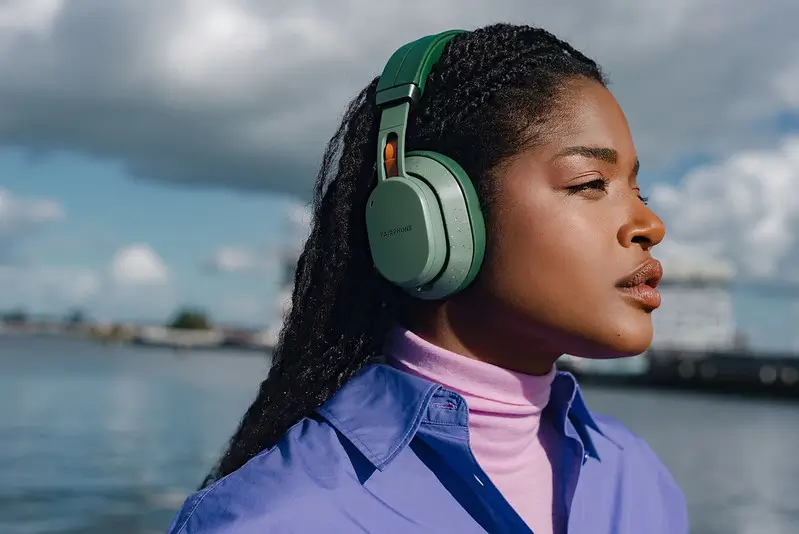 Fairbuds XL headphones
Fairbuds XL headphones
As the amount of electronic waste grows rapidly, some companies are making a difference with a strong commitment to environmental well-being. A notable example is Fairphone, a purpose-driven social enterprise from the Netherlands. Their mission is to establish a viable market for ethical electronics and to motivate the entire industry to act more responsibly, including creating electronic products using fair and recycled materials, and advocating for better working conditions throughout the production process.
Fueled by this commitment, instead of working with existing recycled material suppliers for smartphones, Fairphone moved forward to look for local supplier that was able to offer the recycled plastics for headphones. The partner search led them to Global Green Material (GGM), the like-minded and reliable local supplier, who can move the needle together. Global Green Material (GGM) is a GRS-certified (Global Recycling Standard) company specializing in recycling plastic from unique sources and materials repurposing in Taiwan. With over two decades of their expertise in post-consumer recycled (PCR) materials, GGM also honorably passed the FDA NOL compliance and became the first company in Asia to offer food-grade PCR plastic solutions.
Post-consumer recycled(PCR) plastic comes from products that have been used by end users and then recycled. Unlike pre-consumer waste resulted from the manufacturing processes, PCR plastics specifically recycles items like bottles and containers. Sourcing PCR can create incentives for the recycling of the consumer waste, and lessens dependence on virgin plastic production, making more environmentally benefit to lower carbon footprint.
Leveraging the expertise in a spectrum of recycled materials, including polypropylene (PP), polypropylene (PE), polystyrene (PS), and other plastics, GGM plays a crucial role in Fairphone’s ambitions. Collaborating closely, the two companies tested materials and additives, ensuring the stability and quality of the headphones. Throughout the creative process, from brainstorming to research and product development, GGM supported Fairphone by accommodating small orders and learning from challenges, fostering their shared journey toward growth and sustainability.
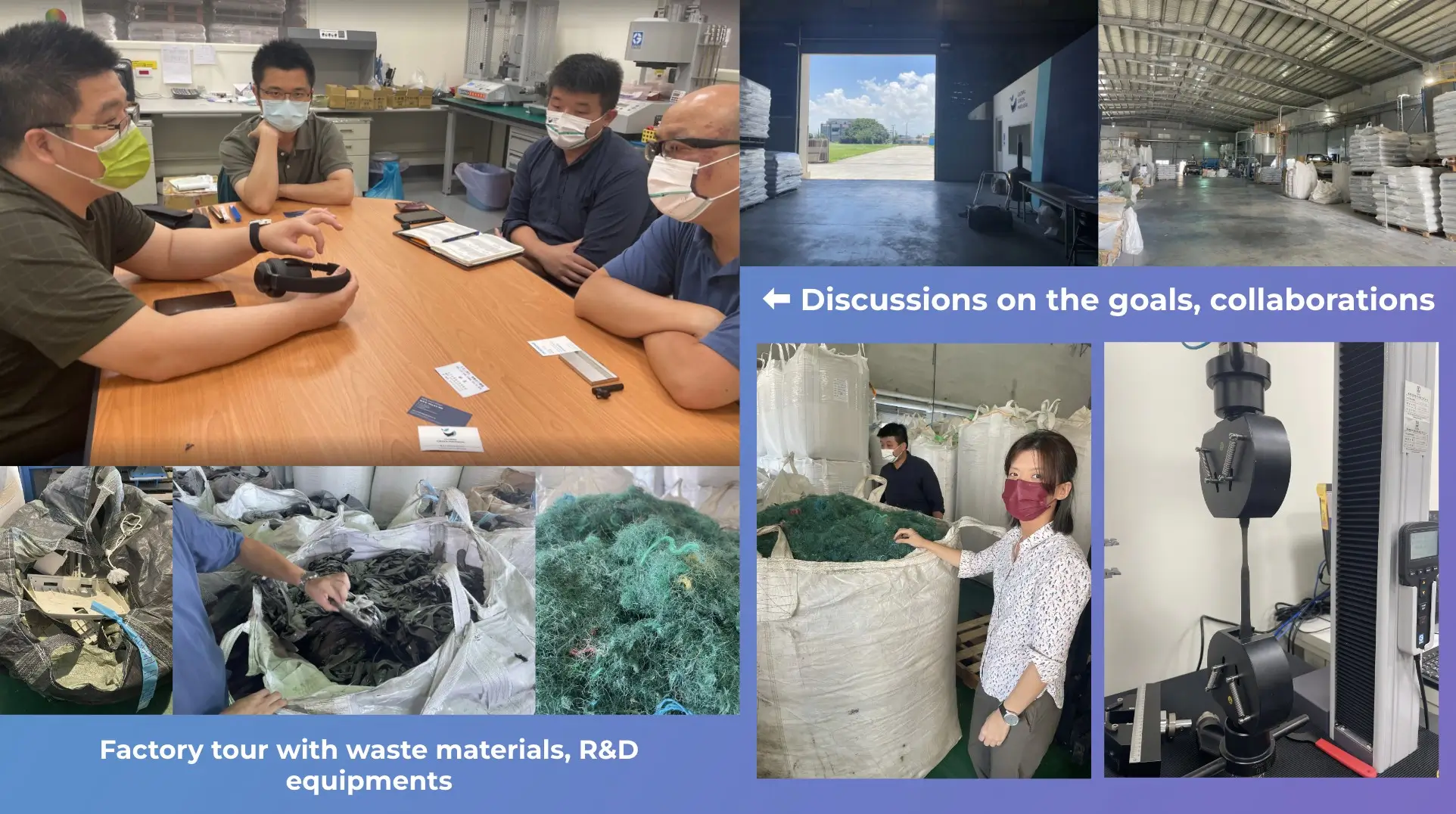 Factory visit, discussion on varies waste sources
Factory visit, discussion on varies waste sources
The collaboration between Fairphone and Global Green Material bore fruit in the form of an innovative product: Fairbuds XL, a modular-designed headphone with over 80% structural plastic parts crafted from 100% post-consumer recycled plastics- sourced from the waste containers of the electronic industry.
Released in May 2023, these wireless over-ear headphones have garnered positive reviews for their exceptional features. The sleek and stylish design prioritizes comfort, utilizing recycled materials and offering modularity for easy component replacement, making Fairbuds XL a standout choice in the market.
Fairbuds XL delivers clear and natural-sounding audio with active noise cancellation (ANC) for an immersive experience. With a battery life of up to 28 hours with ANC on and 30 hours with ANC off, plus fast charging, it offers convenience. Additional features include Bluetooth 5.2 connectivity, IP54 water resistance, and an interactive joystick.
The Fairbuds XL stands out as an excellent choice for those seeking sustainable, high-quality headphones. Fairphone and GGM’s teamwork, reflected in Fairbuds XL’s slogan “Superior sound. Sustainably designed,” shows their strong dedication to making eco-friendly products.
Creating an innovative electronic product is a challenging journey marked by trial and error. This process involves continuous testing and experimentation. From GGM’s side, countless prototypes made from their recycled material were discarded, though each failure provided valuable insights. Even when GGM found the right material for mass production, Fairphone's headphone injection molding manufacturer needed more confidence and time to adjust their process parameters for using the new technology and recycled materials. Finding a balance between incorporating new technology, maintaining a commitment to sustainability, and making suppliers and users happy requires careful work.
The diligent collaboration finally bore fruit. Fairbuds XL has achieved remarkable success since its launch in 2023, making it one of the only headphones on the market with a modular design that uses over 80% recycled plastics. The product surpassed sales expectations, with approximately 6,000 units sold within just five months of its release.
In addition to its commercial success, Fairbuds XL has contributed significantly to environmental sustainability by reducing carbon emissions by approximately 60% when compared to products made from virgin plastics. This impressive performance reflects both the market's demand for sustainability and the positive environmental impact of innovative efforts.
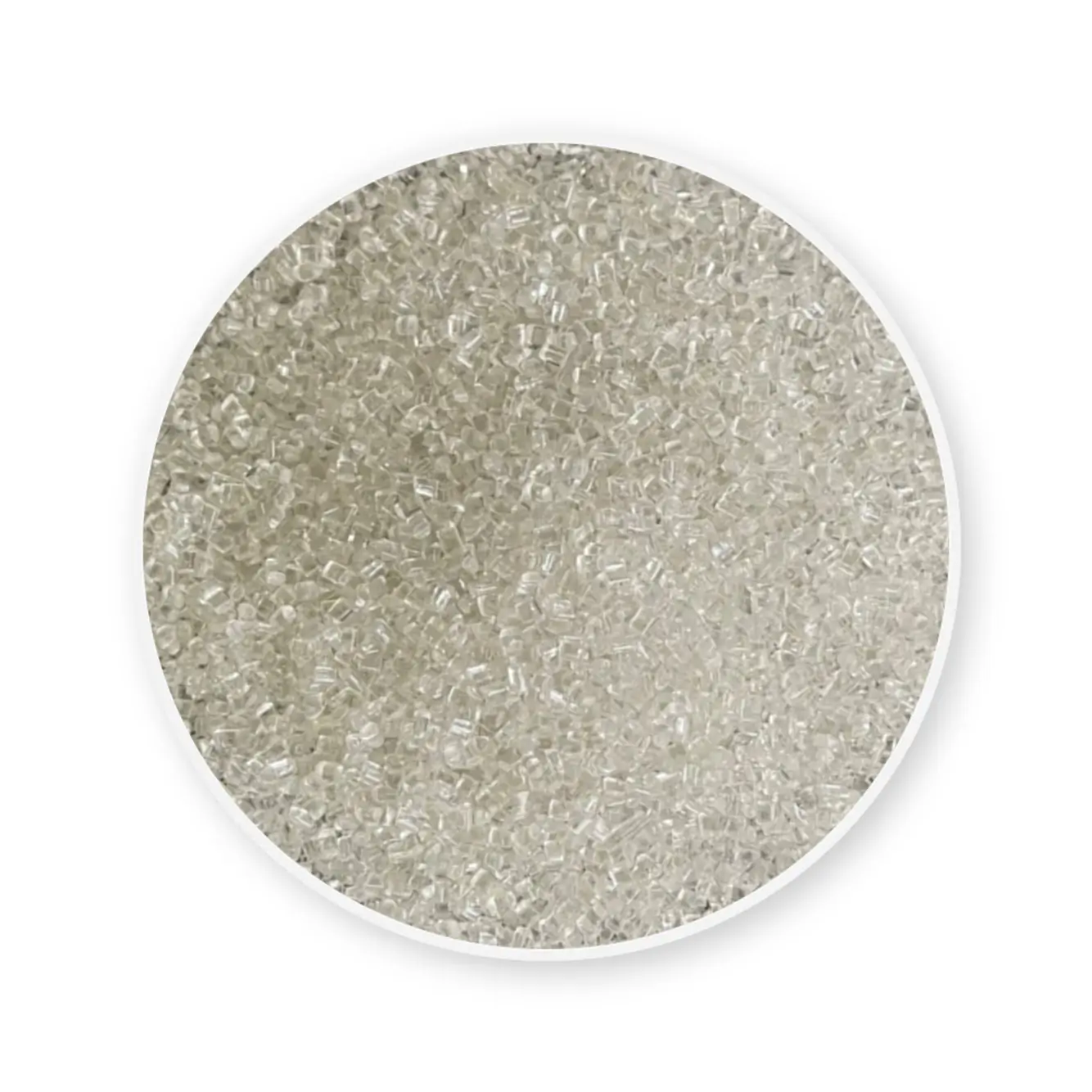
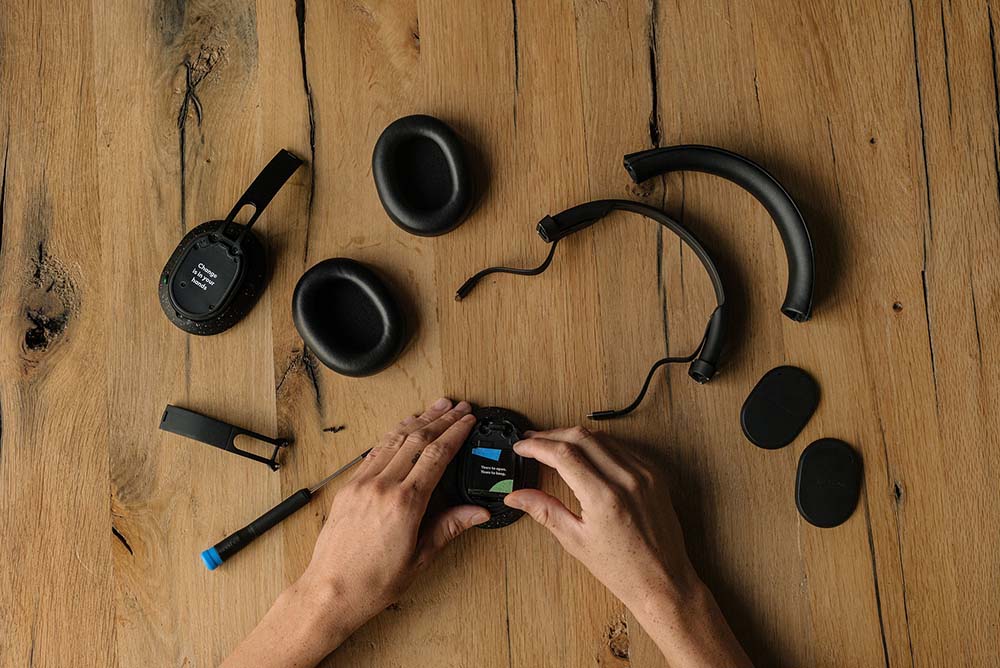 rPC pellets developed for FairPhone / Fairbuds XL, a modular-designed headphone with over 80%
structural plastic parts crafted from 100% post-consumer recycled plastics.
rPC pellets developed for FairPhone / Fairbuds XL, a modular-designed headphone with over 80%
structural plastic parts crafted from 100% post-consumer recycled plastics.
The remarkable success of Fairbuds XL not only boasts impressive sales but also reshapes industry practices by promoting the use of diverse waste sources. This shift influences competitors seeking remakes, illustrating Fairphone’s pioneering role in driving industry change.
This success and industry impact is attributed to a strategic partnership between Fairphone and GGM. GGM takes the lead in the production and development of recycled materials from different waste sources, leveraging its two decades of expertise in post-consumer recycled (PCR) materials. Fairphone contributes its expertise along with a drive to adjust their process parameters using new technology and recycled materials, ensuring their viability and functionality in mass production.
This division of roles emphasizes the collaborative nature of this strategic partnership, blending the strengths of both organizations.
Looking ahead, Fairphone and GGM aim to tackle ocean waste, specifically, the challenges of recycling Styrofoam. This new collaboration started from the discovery of GGM's innovative solvent-based method for reducing Styrofoam. To overcome the current limitations of incineration and low recycling rates of Styrofoam, GGM’s solution involves using a toxic-free solvent to dissolve the material, extracting pure polystyrene (PS) and strengthening it into High Impact Polystyrene (HIPS). This innovative approach reinforces their dedication to sustainable practices and environmental stewardship.
The key to the successful collaboration of Fairphone with Global Green Material is a strong commitment to sustainability. Fairphone's founder, Bas van Abel, highlights how working together with like-minded partners with shared values can bring about systemic change for any industry. This dedication surpasses their individual initiatives, serving as an impactful model for the electronics industry – and beyond
In 2024, the Fairbuds XL headphones were awarded a gold medal from the Hendy van de Velde Awards, one
of Belgium’s most prestigious design awards, and the iF Design Award in Product Design category. In
addition to the repairable design, the jury praised the fact that the headphones integrate fair and
recycled materials, calling the Fairbuds XL "the consumer product of the future.”
https://henryvandevelde.be/en/awards/24/fairbuds-xl


As the world pushes for ocean conservation, a collective awakening arises, urging nations and communities to embrace sustainable practices to safeguard marine ecosystems. To this end, the Dutch company Boskalis, and the National Taiwan Ocean University (NTOU) are working together on a coral farming program to support coral reef restoration and conservation. Their shared commitment stands out in nursing corals, a project that not only protects sea life, but also fosters a meaningful partnership.
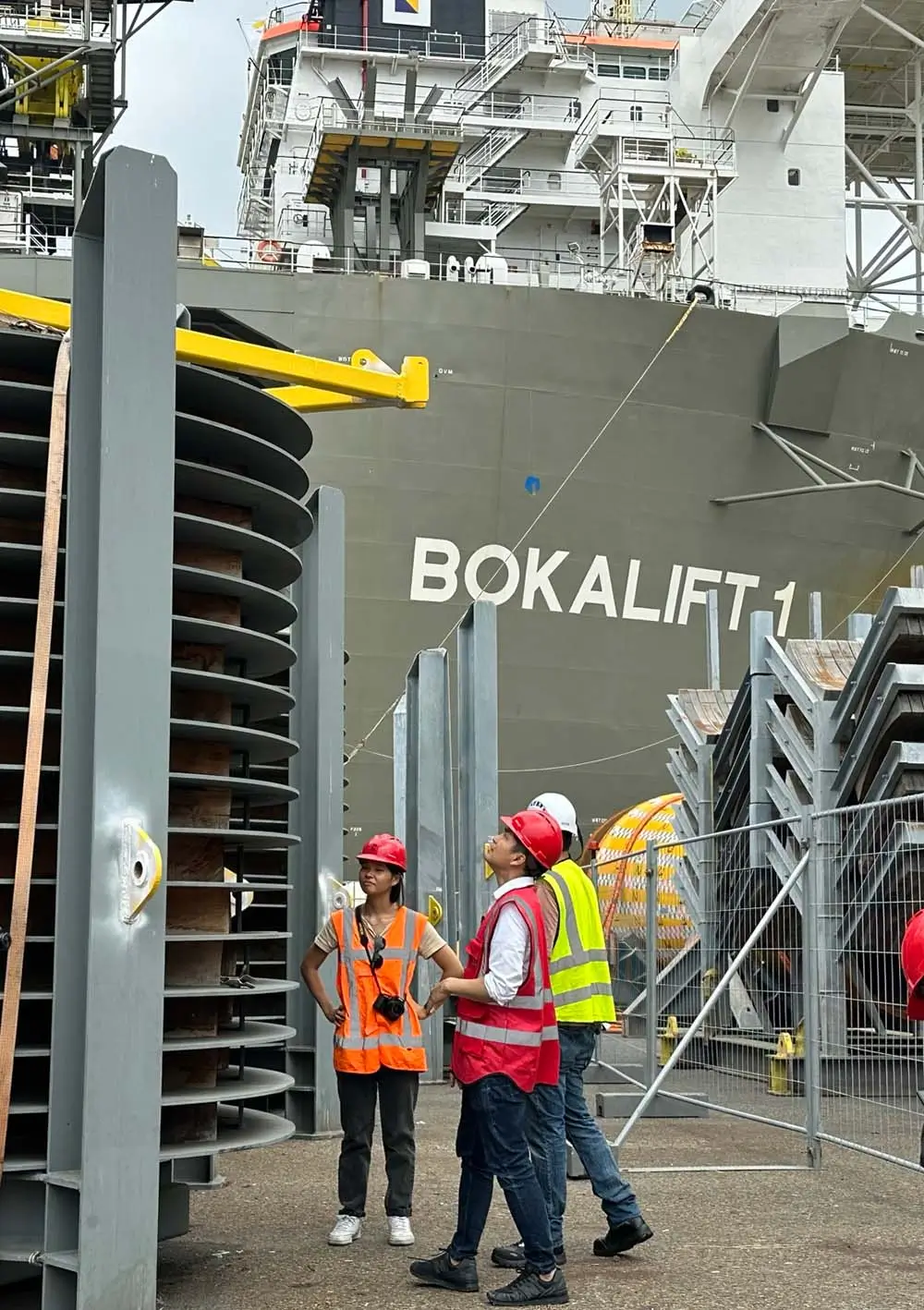 In search of the useable materials at the Port of Anping
In search of the useable materials at the Port of Anping
Taiwan's marine ecosystems, once boasting biodiversity levels over 30 times higher than the global average, now face severe threats from overdevelopment, overfishing, and pollution. The rapid decline in fish stocks and essential marine habitats creates an urgency for proactive measures.
It may seem surprising that Boskalis, a century-old expert in marine engineering, is joining the coral reef nursing program. Boskalis is active in Taiwan’s offshore wind sector and last year completed the installation of the foundations for the Changfang and Xidao wind farm off the country’s western coast. However, as a leading global dredging contractor and marine services provider, Boskalis is no stranger to ocean conservation initiatives. The company launched its own Artificial Reefs Program in 2017 which was aimed at understanding and applying the ecological and hydraulic benefits of artificial reefs. Through the restoration of degraded coral and oyster ecosystems, modular artificial reefs can enhance the resilience of marine habitats. Artificial reefs can also function effectively as ecological scour protection and can be applied to wind turbine foundations, or to protecting cables and pipelines on the seabed.
Now, Boskalis is seeking to extend its marine conservation efforts to the water around Taiwan, forming an innovative collaboration with the National Taiwan Ocean University (NTOU) to tackle Taiwan's marine ecosystem challenges. NTOU, a globally-recognized marine institution, has proactively developed world-class coral reef nursing technology, including the establishment of the Coral Farming Lab for breeding ocean organisms.
Recognizing NTOU's expertise in coral farming, Boskalis proposed a collaboration in coral reef restoration, forging a partnership between an ocean construction company and a coral preservation institute. Through this alliance, Boskalis identifies NTOU as an ideal partner with a shared a commitment to marine environmental protection.
The discovery of the Coral Farming Lab at NTOU was a pleasant surprise for Boskalis, aligning perfectly with its marine conservation goals. The connection was established in 2023 by a student intern who was in touch with NTOU professors, leading to this valuable partnership.
Another pleasant surprise was meeting Dr. Shinya Shikina at NTOU, an esteemed expert in coral restoration from Japan, whose expertise further enhances the institution's capabilities. With NTOU's acknowledged expertise, the partnership shifted its focus to assisting the institution's "Coral Farming Lab" and its role in advancing coral aquaculture and restoration techniques.
NTOU takes pride in its Coral Farming Lab, equipped with advanced facilities to cultivate and restore coral reefs. Inspired by techniques developed in Okinawa, Japan, the lab employs innovative methods for coral propagation. It nurtures corals using selected base materials on elevated tables in natural underwater environments to minimize potential damage. The lab plays a key role in advancing coral aquaculture and restoration techniques and conducting coral research.
The focus of this partnership is to test various materials as a nurturing base for coral reef growth. This initiative aims to identify effective and environmentally sustainable base materials or repurpose unwanted waste materials as potential nurturing bases for coral propagation.
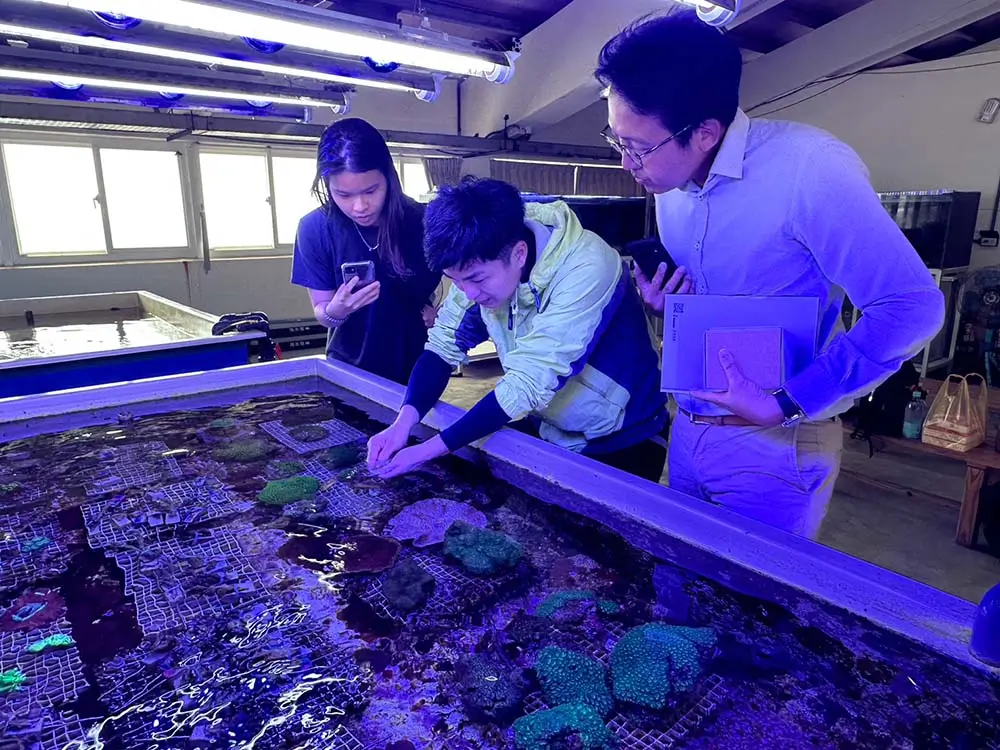
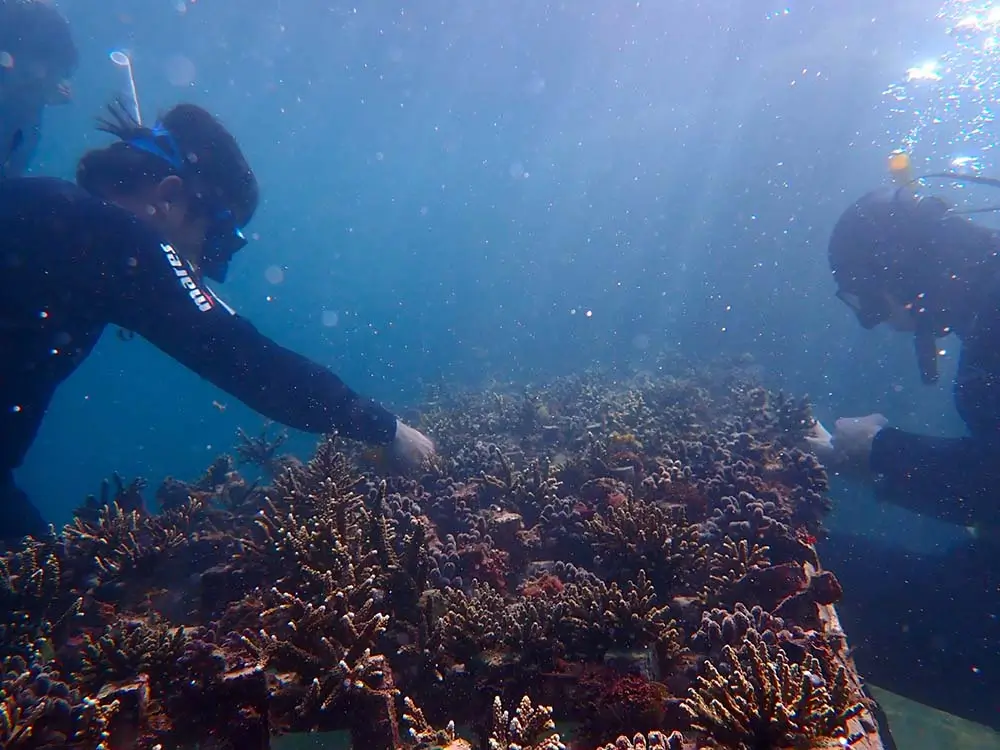
Understanding the importance of finding the right base for coral growth, the team now explores specific factors that determine the viability of base materials for coral nursing.
Embracing the principles of a circular economy, Boskalis actively turns unwanted waste materials from its ocean construction sites into valuable resources. Once considered discarded, these materials find a new purpose through collaboration with NTOU, transitioning to the Coral Farming Lab for underwater testing and evaluation of their efficacy in promoting coral growth.
After a year of collaboration, while the perfect material has yet to be identified in this ongoing partnership, the collaboration has expanded to include the academic field. Notably, Boskalis joined the 2023 Energy Taiwan Exhibition, a key event focused on innovations in the energy sector and attracting diverse participants, including local and global visitors, suppliers, and educational institutions. During the exhibition, students from Taipei Nangang Elementary School and Xizhi Elementary School were invited for a coral ecology workshop at the Boskalis booth, engaging in hands-on learning about various marine organisms. The success of this workshop also led to the proactive outreaches from multiple educational institutions.
Following these engaging educational events, Boskalis’ booth design reflected the principles of “Reduce, Reuse and Recycle,” which helped earn the “Best Creativity Award” in the “Sustainable Booth Award competition” organized by the exhibition.
These initiatives gained positive feedback from attendees as both local and foreign visitors praised Boskalis and NTOU for their initiatives in promoting ocean protection and biodiversity awareness. This community engagement has built a positive connection with the community, NGOs and academics, creating a cycle of awareness and action to address critical marine issues.
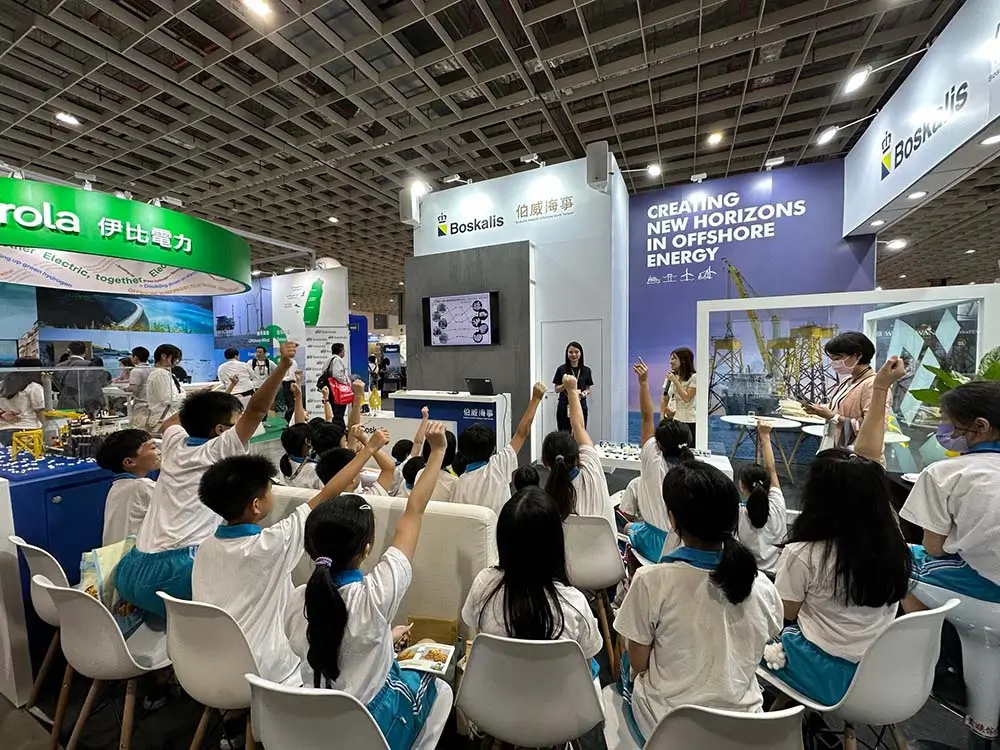
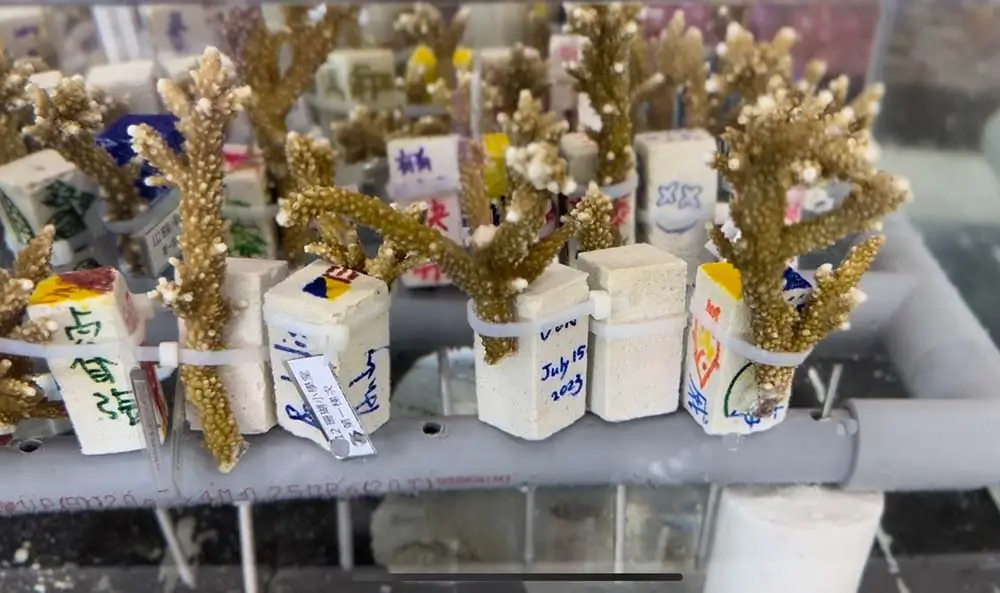
In nurturing the ocean and bridging the community, Boskalis strategically collaborates with NTOU and the Coral Farming Lab, aligning corporate interests with academic goals. Looking ahead, Boskalis is committed to future collaborations, developing a sustainability roadmap for implementation by 2025. Its short-term goals includes, but not limited to, the followings:
The central massage of this collaboration highlights the significance of localization for sustained success, emphasizing local knowledge for practical solutions to Taiwan's environmental needs.

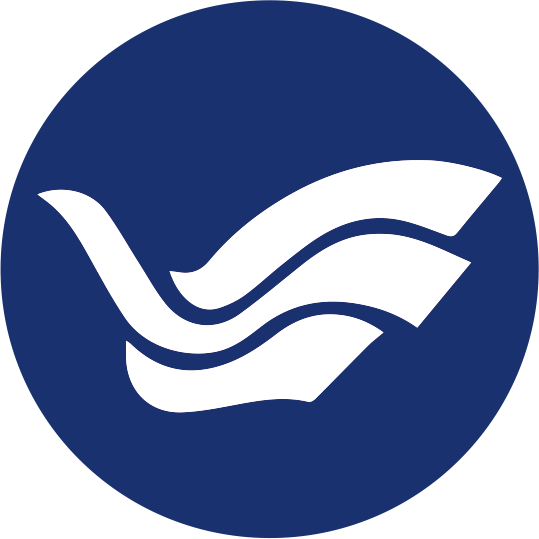
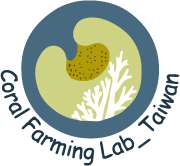
Dutch company Somni Solutions and the Taiwanese company System Access, along with research partners, Center of Bridge & Railway Engineering Research (CBRER) at National Central University (NCU) in Taiwan and The Hague University of Applied Sciences (THUAS) in the Netherlands, are working together to make large infrastructures safer.
Recognizing the challenges older bridges face, this teamwork employs advanced technologies like optical fiber sensors in Structural Health Monitoring (SHM) to ensure that New Taipei’s Guan-Du bridge remains solid and sturdy. This initiative provides high-quality data monitoring, enabling efficient resource allocation for optimal bridge safety.
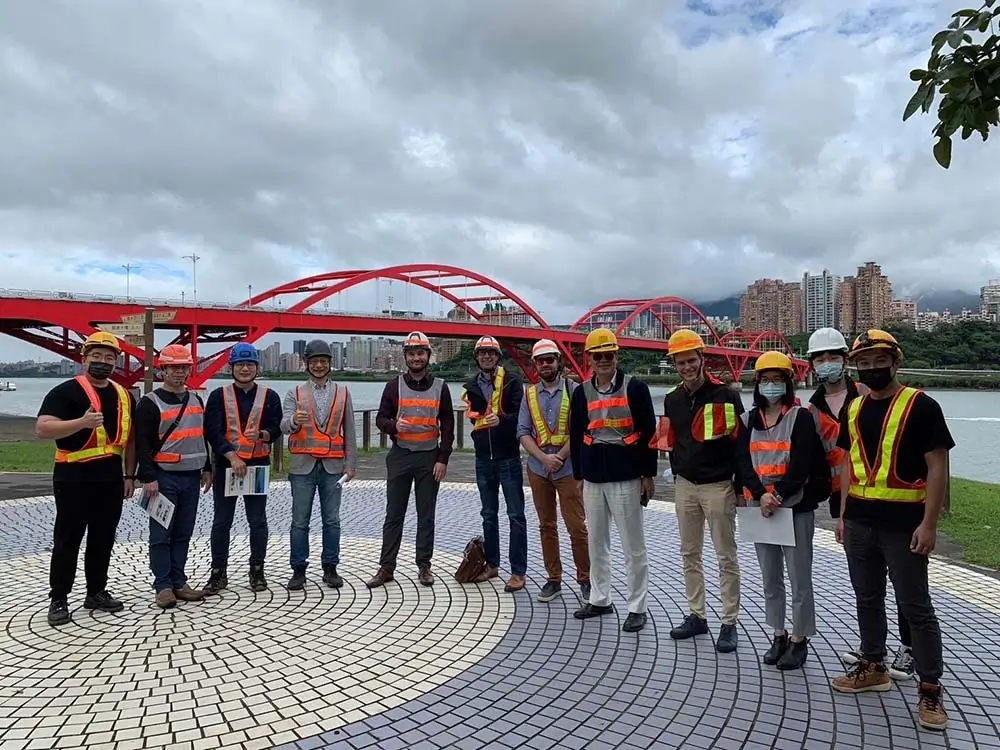 Field trip day with all project partners
Field trip day with all project partners
The collaboration between Somni Solutions and System Access originated from a Eureka Globalstars program, a European platform that facilitates joint efforts for research and development (R&D) projects by providing funding. This program is an opportunity for researchers and businesses to explore new markets, leverage expertise, and secure financing. In 2021, Somni and System Access submitted their joint proposal, the so-called “SUNSPOT (SafegUardiNg infraStructure using PhOTonics) project.”
The goal of the SUNSPOT project is to ensure accurate monitoring of New Taipei's Guan-Du Bridge, for its safety. Built in 1983, the Guan-Du Bridge was the first fully welded steel arch bridge in Asia, stretching across 809 meters with a clear deck width of 19 meters. Since its completion, the bridge has experienced a notable increase in traffic volume, posing challenges to its structural health and safety.
Similar to many aging infrastructures, Guan-Du Bridge faces challenges from increased daily vehicular movements, heavier loads, and environmental erosion. Consequently, monitoring and maintaining the ongoing safe operation of Guan-Du Bridge is crucial.
Somni Solutions, established in the Netherlands in 2017, specializes in fiber optic sensing solutions for various applications. Their Fiber Bragg Grating (FBG) sensor technology is the data acquisition hardware contributing to the SUNSPOT project. System Access, founded in Taiwan in 1996, brought its expertise in SHM system design, data analysis algorithms, and cloud-based data management solutions. CBRER at NCU and THUAS also play integral roles, contributing their knowledge of fiber optics sensing technology for bridge health monitoring applications and optical measurement technology, respectively.
The SUNSPOT project aims to develop a comprehensive SHM technology using a network of optic sensors embedded in the bridge. The collaboration involves sensor installation provided by NCU, who, together with System Access, is developing the "SHM Platform." THUAS brings its expertise to reduce measurement uncertainty and improve temperature compensation in fiber optic sensors, ensuring the success of this innovative initiative.
SHM is a process of continuously monitoring the condition of a structure, such as a bridge, to identify any changes that could indicate damage or potential failure. By collecting data from sensors embedded in the structure, SHM systems can provide early warning of problems, allowing engineers to take preventive measures before they become critical.
In the SUNSPOT project, using FBG sensors in SHM technology is a groundbreaking approach to bridge monitoring. FBG sensors are tiny devices made from optic fibers which reflect distinct wavelength patterns, providing precise measurements to track the bridge’s strain, tilt, vibration, temperature, and other environmental changes. Dispersed strategically throughout the bridge, this network of ultra-sensitive sensors continuously sends signals to the SHM system and helps monitor the bridge's safety.
FBG sensors change how we monitor structures with their unique attributes. Unlike traditional sensors that rely on wires and electricity, FBG sensors communicate using light, offering a more delicate and sensitive approach to detecting safety measures.
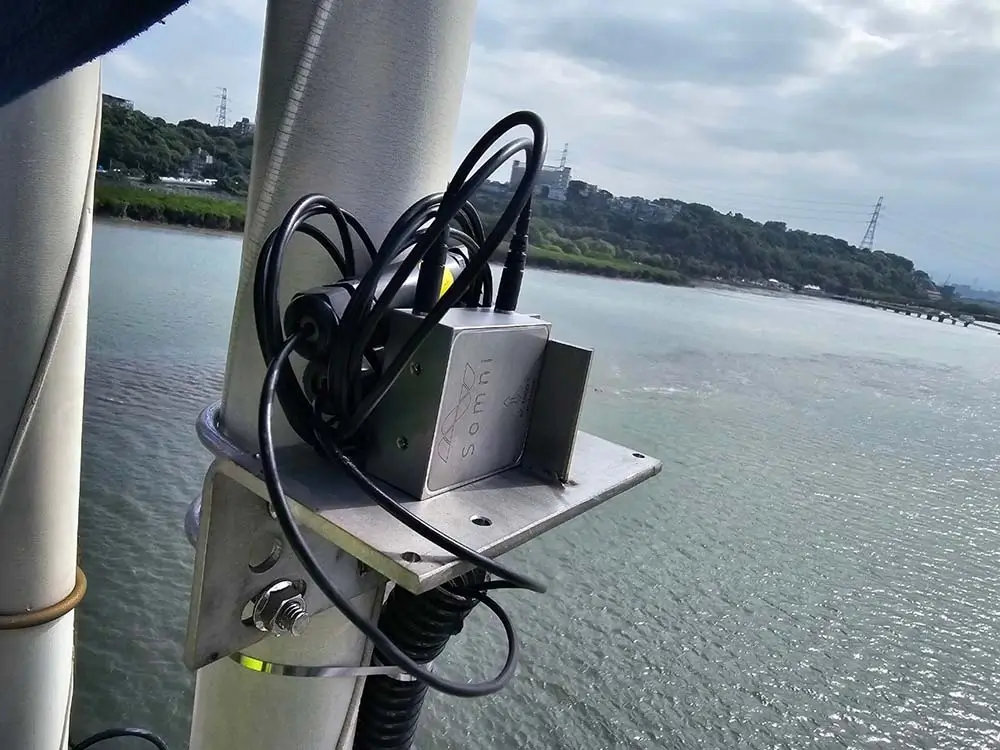 Fiber Optical Accelerometer on the cable -measuring cable vibration-the cable tension can be
calculated from viberation frequency
Fiber Optical Accelerometer on the cable -measuring cable vibration-the cable tension can be
calculated from viberation frequency
Once the FBG sensors are installed on the bridge, they communicate with the SHM systems using light reflection and interference. When the sensors experience strain, temperature shifts, or other environmental changes, the wavelength of the reflected light changes. Equipped with photodetectors, the SHM system analyzes these wavelength variations. The SHM system gathers information about the bridge's structural health by interpreting these changes. The processed data is then used for:
As a result, the SUNSPOT project delivers accurate and continuous data on the Guan-Du bridge's health and performance without the need for sensor replacements or labor-intensive work.
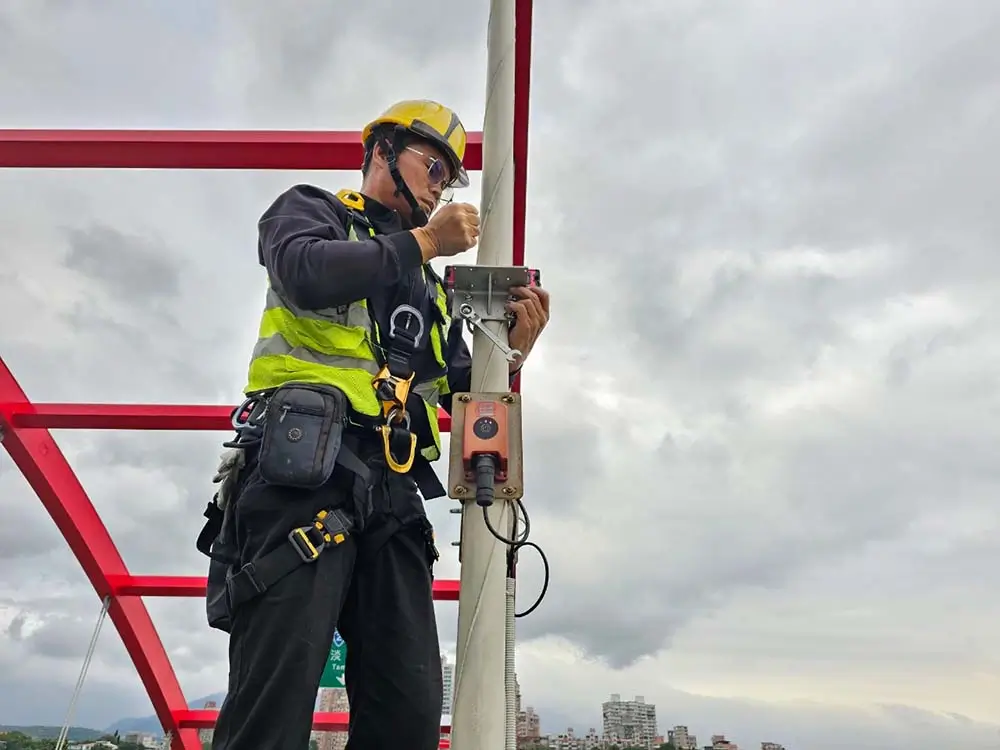 Sensor installation on the bridge
Sensor installation on the bridge
The SUNSPOT collaboration leverages the unique strengths of Somni, System Access, NCU and THUAS, positioning them as industry leaders. Beyond the technical integration of FBG sensors and SHM technology, it signifies a strategic partnership to reshape bridge safety.
Even facing the challenges posed by the COVID-19 pandemic, the resilience of this partnership became apparent through countless online communications and collaborative teamwork. Notably, the smooth integration of FBG sensors into the system upon their shipment to Taiwan showed the effectiveness of their online collaboration.
With the completion of the optical fiber installation on the Guan-Du Bridge in November 2023, the SUNSPOT project has completed its initial phase. The achieved outcomes already represent significant advancements in bridge safety. The journey towards innovative structural health monitoring continues, and the collaborative efforts of Somni and System Access endure for the future.
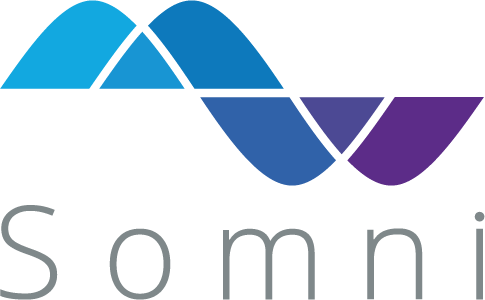
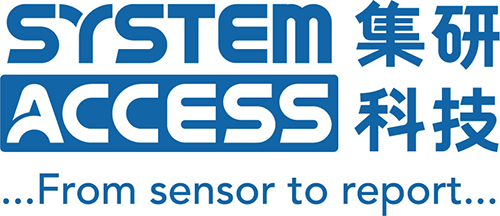
Taiwanese multinational company MEAN WELL is the world's largest standard power supply company and third largest in DC output switch mode power supply. For MEAN WELL to establish an office abroad goes beyond business transactions, it is also about building cultural unity
Since 2019, MEAN WELL has collaborated with the City of Amstelveen in the Netherlands, blending Taiwan’s Dragon Boat Festival traditions with local celebrations of cultural richness. This initiative serves as a bridge connecting Taiwan and the Netherlands, underlining MEAN WELL's commitment to cultural integration and living up to its brand identity: “Your Reliable Partner.”
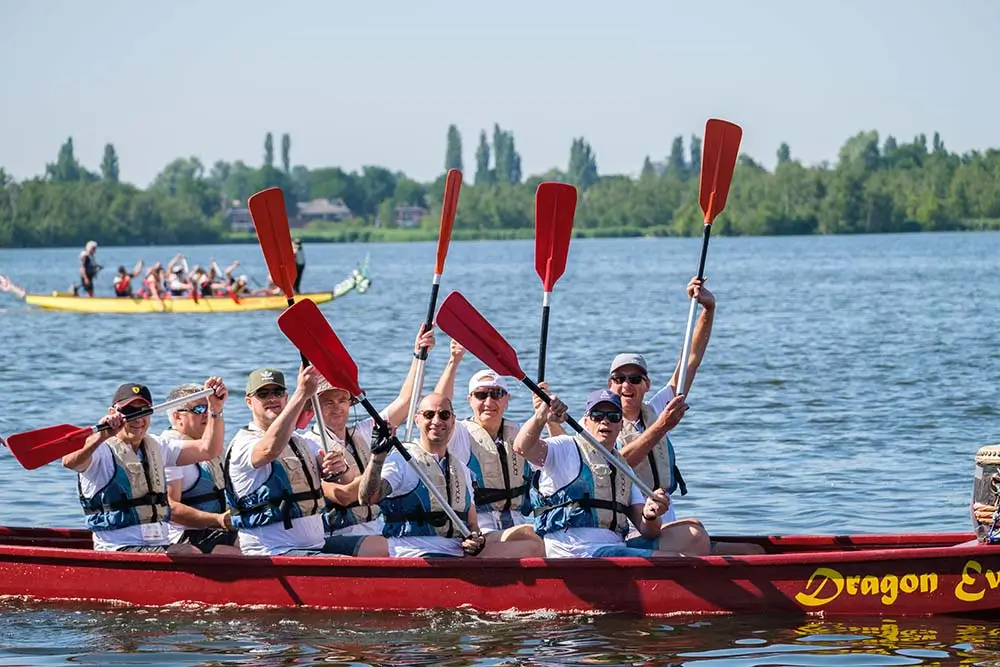 MEAN WELL Dragonboat Festival
MEAN WELL Dragonboat Festival
In 2006, MEAN WELL took a significant leap in its global expansion journey by opening its first business abroad, initiating a long-term collaboration with the City of Amstelveen in the Netherlands. Situated in North Holland, the vibrant city values cultural diversity and innovation, with approximately 23% of its population comprising internationals. Amstelveen is home to numerous large corporations, including Japanese giant Canon, which set up its European headquarters in the city. Amstelveen proved to be an ideal setting for MEAN WELL's European venture as a Taiwanese multinational corporation.
There was already a tradition of dragon boat races in Amstelveen when in 2006 Taiwan’s Koahsiung gifted Amstelveen City with two dragon boats, as symbols of cultural friendship between 2 water cities. In 2010 De Amstelveense Stadsdraken’s team went to Taiwan to participate in a Dragon Boat race at the invitation of the mayor of Kaohsiung, and even finished second in the event. However, after the team was disbanded, the dragon boat was handed over to the NDBF (Dutch Dragon Boat Federation), only to be rediscovered by MEAN WELL Group founder Mr. Jerry Lin in 2019. The European branch of MEAN WELL then purchased and carefully restored this precious piece of Taiwanese cultural heritage.
Mr. Lin's commitment went beyond restoration; he initiated lively and entertaining Dragon Boat races in Europe, breathing new life into the traditional cultural practice and showcasing the vibrancy of Taiwanese culture in the heart of Europe.
With the 2023 edition marking its third consecutive year, the Dragon Boat event has become an annual tradition. Following a temporary break due to the challenges posed by the COVID-19 pandemic, MEAN WELL resumed the event and attracted 16 teams. Among them were teams from MEAN WELL's European distributors – namely the Reliable Team, Sustainable Team, Excellence Team, and CSR Team – and participants from prominent Taiwanese companies like Evergreen Group, Yang Ming Marine Transport, and Advantech, as well as the Taiwan Representative Office in the Netherlands. Local entities, including the Amstelveen City Government and the Hockey Myra Field Hockey Club, also joined the event. With Amstelveen City Mayor Tjapko Poppens in attendance, the fierce racing competition began.
The event went beyond mere competition, featuring dynamic performances like drumming, martial arts, lion and dragon dances, alongside other traditional activities. Later that evening, MEAN WELL invited the Taiwanese Meimage Dance Company to perform their dramatic dance piece “Silent Island Paradise” for a distinctive cultural experience. The culinary offerings were also exceptional. Many indulged in the Taiwanese zongzi wrapped in bamboo leaves – a must-eat during Dragon Boat Festival.
To help Dutch people understand Taiwanese culture and tradition, MEAN WELL prepares a comprehensive program booklet in which they explain the history behind the Dragon Boat Festival and race, as well as the many food stalls and cultural performances and workshops available on the event day.
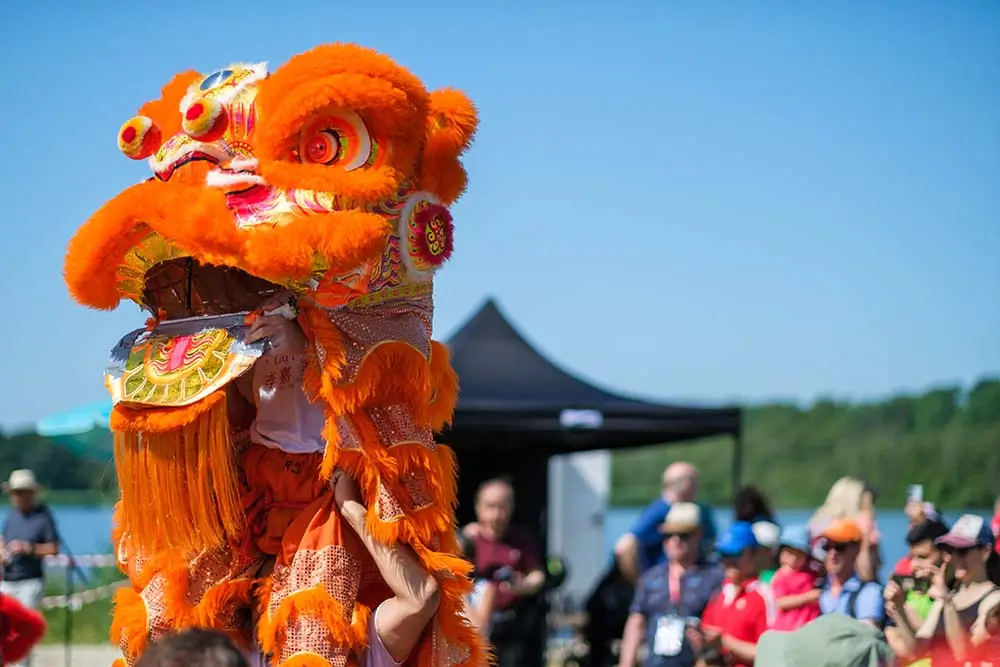 MEAN WELL Dragonboat Festival
MEAN WELL Dragonboat Festival
Despite the overwhelming success of the Dragon Boat event in fostering cultural exchange, challenges are an inevitable part of such endeavors. In 2022, the Dragon Boat event faced an unexpected challenge when the river embankment collapsed. However, thanks to the City of Amstelveen, the embankment was repaired and reinforced just one day before the scheduled Dragon Boat Festival. The close collaboration between MEAN WELL and the Municipality played a crucial role in overcoming this obstacle. This incident not only highlighted the partnership's resilience but also showcased both parties' commitment to ensuring the success of the cultural celebration.
The collaboration between MEAN WELL and Amstelveen spans diverse areas beyond the annual Dragon Boat Festival. These efforts align with MEAN WELL's commitment to embrace Corporate Social Responsibility (CSR), Sustainable Development Goals (SDGs), and Environmental, Social, and Governance (ESG) objectives. They involve regular group meetings and local projects, such as the initiative to establish a multi-sport park for Ukrainian refugees in Amstelveen.
The municipality serves as a bridge, providing essential information and resources. Meanwhile, MEAN WELL contributes by conducting thorough research, identifying suitable partners, and building lasting relationships. This strategic partnership has been instrumental in achieving shared goals and reinforcing cultural ties between Taiwan and the Netherlands.
The Dragon Boat Festival in Amstelveen symbolizes the ongoing cultural cooperation between Taiwan and the Netherlands. This event underscores MEAN WELL's commitment to being a reliable partner, fostering unity, friendship, and collaboration in its European home. For Taiwanese businesses seeking to establish themselves in the Netherlands, MEAN WELL assures that the City of Amstelveen is also "your reliable partner," with its open economy, diverse society, and excellent connectivity to the rest of Europe. Amstelveen actively supports MEAN WELL's ambitions in Europe and has proposed new locations for the company’s expansion. MEAN WELL has decided on a top location, and will continue benefitting from the robust logistics, the bilingual Dutch community, the high labour productivity, and the quality of life the Netherlands has to offer.
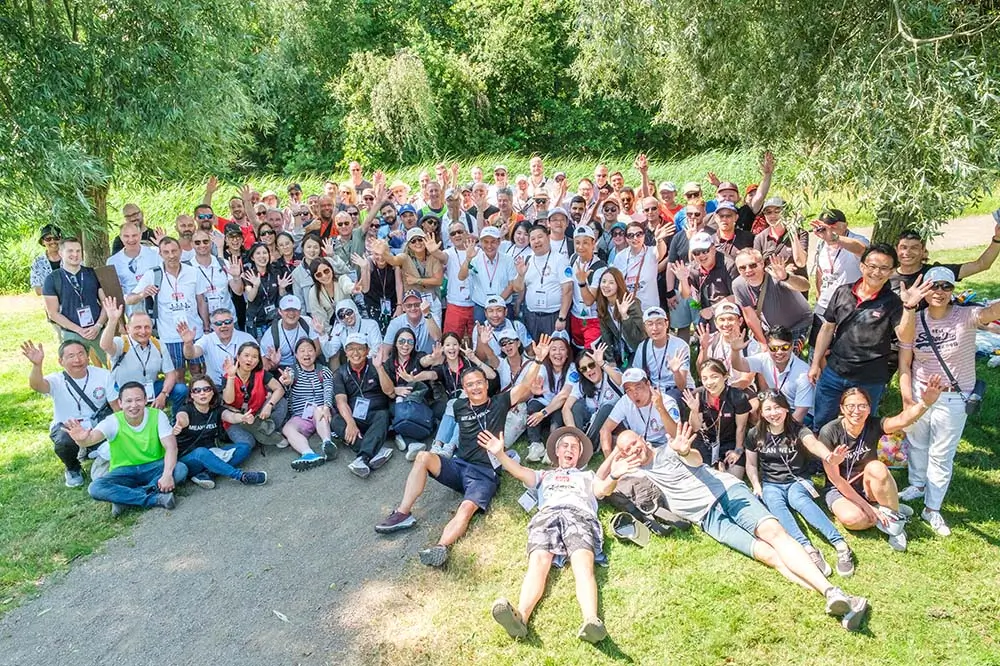 MEAN WELL Dragonboat Festival
MEAN WELL Dragonboat Festival
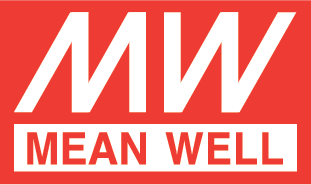

A tale of technological convergence unfolds as Taiwan and the Netherlands join forces, rewriting the narrative of airline travel. E Ink, Taiwan’s leading e-paper display company, has collaborated with BAGTAG, a Dutch expert in multi-airline software, to redefine luggage tags. By merging E Ink's energy-efficient electronic paper technology with BAGTAG's innovative multi-airline software, this collaboration births a revolutionary product – BAGTAG electronic baggage tags.
Born from a shared belief in sustainability and a vision to simplify aviation logistics, this cross-cultural partnership combines Taiwanese innovation and Dutch software prowess, reshaping the future of air travel.
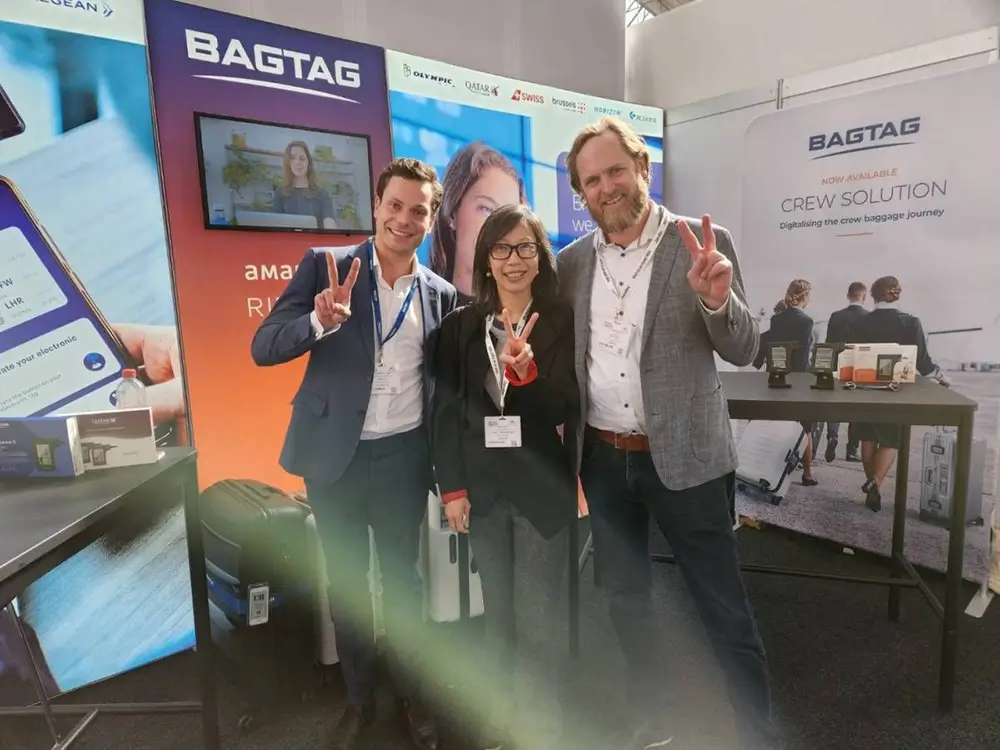 Collaboration of BAGTAG and E Ink
Collaboration of BAGTAG and E Ink
In the pursuit of a groundbreaking product, BAGTAG, a Netherlands-based software company specializing in multi-airline solutions, sought a reputable technology partner. This quest led them to E Ink Technology, a Taiwan-based global leader celebrated for its groundbreaking electronic paper display technology. Since 2023, E Ink has had its European headquarters at High Tech Campus Eindhoven, The Netherlands.
E Ink’s ePaper technology uses millions of tiny ink capsules filled with black and white particles suspended in a clear liquid. The technology is as having microscopic oil drops printed on paper. The print stays on without consuming any energy until the next time it is required to change, which is energy-sufficient and making it perfect for creating screens that are easy on human eyes. Importantly, this e-paper technology is not only battery-free, relying solely on physical mechanisms for its operation but also reusable. Its design allows for repeated use, making it eco-friendly and aligning with environmental sustainability.
This paper-like appearance, along with low power consumption and durability, became the cornerstone for BAGTAG's ambition to redefine Electronic Baggage Tag display. With BAGTAG's expertise in advanced multi-airline software solutions, the synergy between these two companies tackled the sustainability needs of the travel industry, setting the stage for a transformative collaboration.
Experience a new level of travel ease with BAGTAG! This innovative luggage companion brings simplicity to both travelers and airlines. Let's explore how BAGTAG enhances the journey for everyone involved.
BAGTAG is your travel companion, making things easy with these features:
BAGTAG helps airlines in smart ways:
BAGTAG's functionalities extend beyond a mere baggage tag. It makes travel easier and safer for both individuals and airlines.
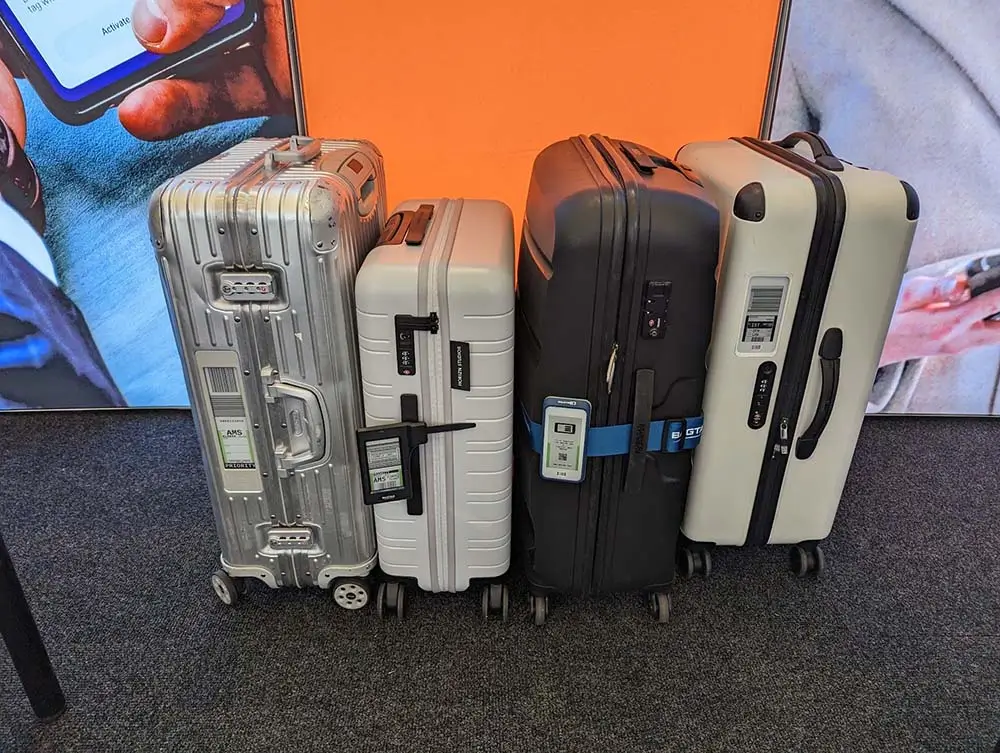 BAGTAGS Fix on Baggages
BAGTAGS Fix on Baggages
Streamlining the aviation industry presented hurdles, including electronic device safety and software integration into airline infrastructure. Integrating new technologies requires adherence to industry standards and regulatory frameworks to ensure data security, communication protocols, and smooth integration with existing aviation infrastructure.
With E Ink's technology, BAGTAG embarked on a determined journey to revolutionize luggage tagging. To overcome aviation industry challenges, E Ink and BAGTAG collaboratively negotiate with retailers, airports, and airlines — a task far from easy but crucial to unite all parties.
E Ink's batteryless electronic paper display proved to be a game-changer in this collaboration. Its revolutionary attributes tackle safety concerns and provide a sustainable alternative to traditional paper tags. Simultaneously, BAGTAG's multi-airline software is seamlessly integrated into airline systems, facilitating a smooth transition to electronic baggage tags.
The collaboration produced an efficient device with scalable production capabilities, meeting the dynamic demands of the growing aviation industry.
Amidst this evolution of the aviation industry, the ground crew, deeply entrenched in traditional practices, initially resisted the shift from paper to digital baggage tags. Trust-building measures, including comprehensive training and education programs, played a pivotal role in overcoming this resistance. Eventually, the ground crew embraced the change, recognizing the efficiency and accuracy offered by electronic baggage tags.
Moreover, ensuring compatibility with airport scan systems and withstanding heavy impact during loading emerged as other critical aspects. Trust between BAGTAG and E Ink became the foundation for collaborative problem-solving, resulting in a robust solution meeting compatibility needs and withholding loading process rigors.
From conceptualization to the realization of the world's first efficient batteryless electronic bag tag, BAGTAG and E Ink faced tough challenges, but they stayed together with a shared vision of sustainability.
This shared vision addressed resistance with education and training, overcame technological hurdles, and ultimately achieved solutions that promised efficiency, cost reduction, and environmental sustainability.
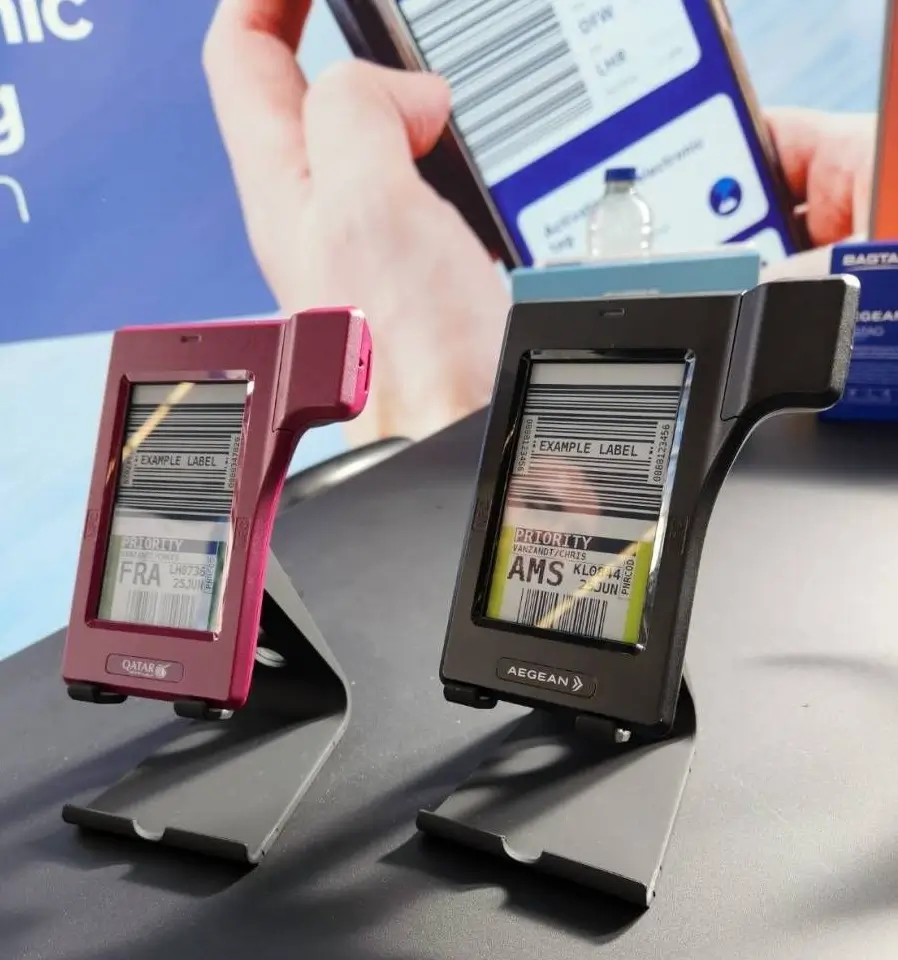 Batteryless and Secured BAGTAG Flex
Batteryless and Secured BAGTAG Flex
The tale of BAGTAG and E Ink is an inspiring example, illustrating that a shared vision is the catalyst for innovation. This vision continues to guide future plans, with an aim to introduce electronic baggage tags to an expanding number of airlines over the next five years. Scaling requirements extend beyond mere product development, encompassing production and exploration of new solutions.
The Netherlands is a strategic geographical location for E Ink, with a collaborative ecosystem, as is shown by this alliance. The Dutch mentality and commitment to sustainability aligns with E Ink’s sustainability goals and technology.
In conclusion, the success of the reusable baggage tag project highlights the crucial role of trust and shared beliefs in development and implementation. The collaboration between BAGTAG and E Ink revolutionized baggage tagging and fostered innovation. Looking ahead, let the tale of "Ink to Air" inspire a journey where sustainability continues to drive air travel innovation.


Right in the middle of Tainan City, Taiwan, an international collaboration transformed the crumbling downtown center into a nature-filled paradise. In 2015, Netherlands-based MVRDV, along with Taiwan's LLJ Architects and The Urbanists Collaborative architects, teamed up to make the abandoned city-center shopping mall a city oasis. Uniting minds from Taiwan and the Netherlands, this project goes beyond refurbishing; it's a deliberate effort to repurpose existing structures and breathe new life into old history.
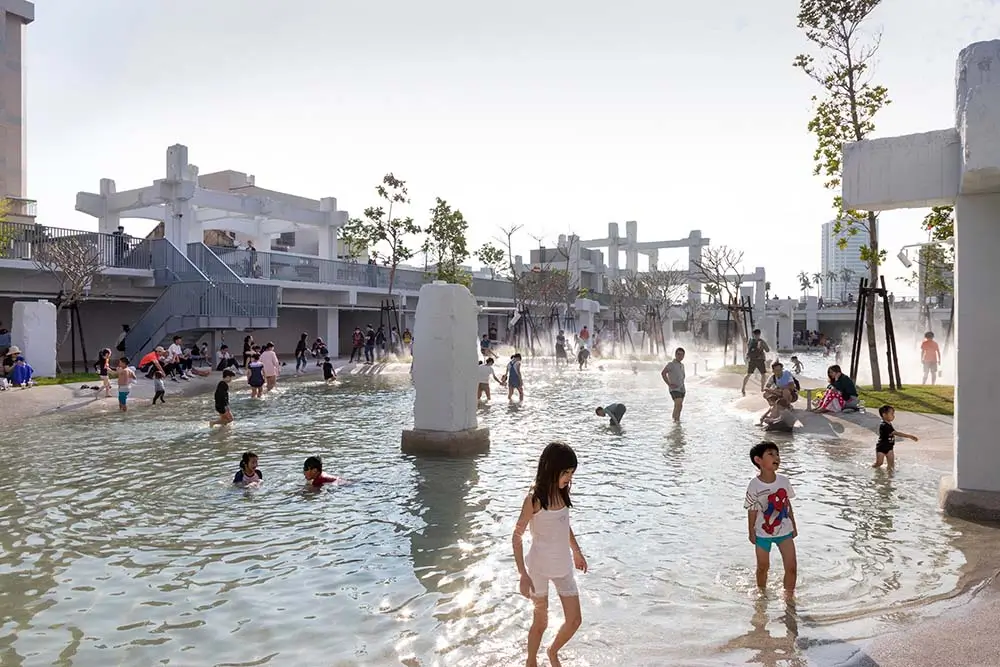 Tainan Spring © Daria Scagliola
Tainan Spring © Daria Scagliola
This journey began in 2015 when MVRDV, LLJ Architects, and The Urbanists Collaborative won the international landscape design competition organized by the Tainan City Government’s Urban Development Bureau. The city government was looking for innovative solutions for its deteriorating downtown mall, troubled by rising crime and social issues, leading to the need for revitalization.
The collaboration focused on revitalizing the neglected 56,000 square meter "China-Town Mall" by transforming it into a vibrant urban lagoon. Alongside, a significant renovation of a one-kilometer stretch of Hai’an Road took place. Initially, MVRDV took the lead in design, with Taiwanese co-architects focusing on execution and government reviews. Over time, this evolved into a robust collaboration where all partners worked closely together on every aspect, forming a strong alliance.
The primary goal was to revitalize Tainan by reconnecting the city with its historic waterfront and introducing economic value to the area. The team successfully achieved this goal, and the landmark opened to the public in March 2020.
Tainan Spring is a symbol of innovative urban design, blending nature, sustainability, and historic preservation to create a vibrant and functional public space.
Upon completion, Tainan Spring quickly gained popularity among both locals and visitors. Hosting year-round events, such as food, wine, and cocktail festivals, the site attracted diverse crowds. Between March 2020 and December 2021, it welcomed approximately 1 million visitors, spanning a wide spectrum of society, from tourists and college students to local families and even daycare teachers organizing visits.
As part of the initiative, Hai’an Road underwent a significant transformation, reducing vehicular traffic to create a green corridor and public space. The creation of new transport nodes further encourages community engagement. In the evenings, the road was completely closed to traffic, allowing a lively nightlife centered around the small businesses in the area.
Tainan Spring has become a popular attraction, hosting a myriad of events and drawing diverse visitors.
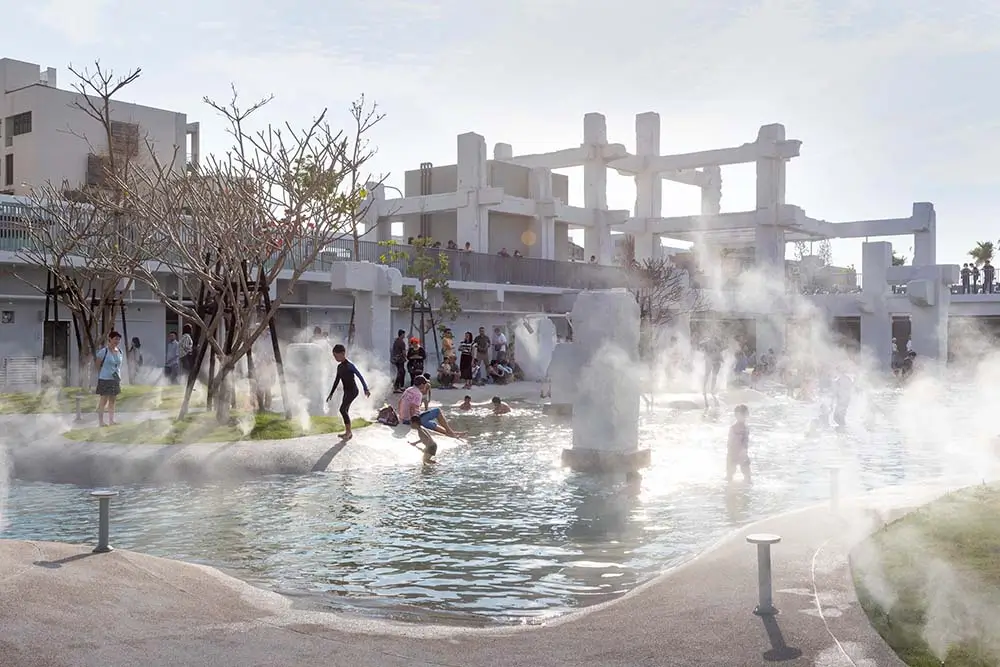 Tainan Spring © Daria Scagliola
Tainan Spring © Daria Scagliola
In the course of the 6-year collaborative endeavor, the Tainan Spring project encountered a multitude of challenges that tested the resilience and adaptability of the teams involved.
In 2015, as the Tainan Spring project began, the city encountered a major health challenge with the outbreak of dengue fever, an illness transmitted by mosquitoes that caused high fever and other symptoms. During this time, concerns about public health intensified, leading to widespread criticism of the lagoon's design. Addressing these concerns, the project responded innovatively by incorporating a ventilation system and a circular water system into the design. A strategic measure to prevent dengue fever involved maintaining the water level between 2 and 20 inches, demonstrating the project's adaptability and commitment to public health.
Another setback in the partnership occurred when the initial construction contractor withdrew, posing a threat to the project's financial stability. This unforeseen challenge forced the team to reassess schedules and budget. Government intervention played a crucial role in securing a second contractor, leading to negotiations on terms, deadlines, design considerations, and budget adjustments. Remarkably, despite the unexpected change in contractors, the project successfully adhered to the original budget, demonstrating resilience in the face of challenges.
This result proves there was effective communication in overcoming obstacles and achieving the shared vision of the Tainan Spring project.
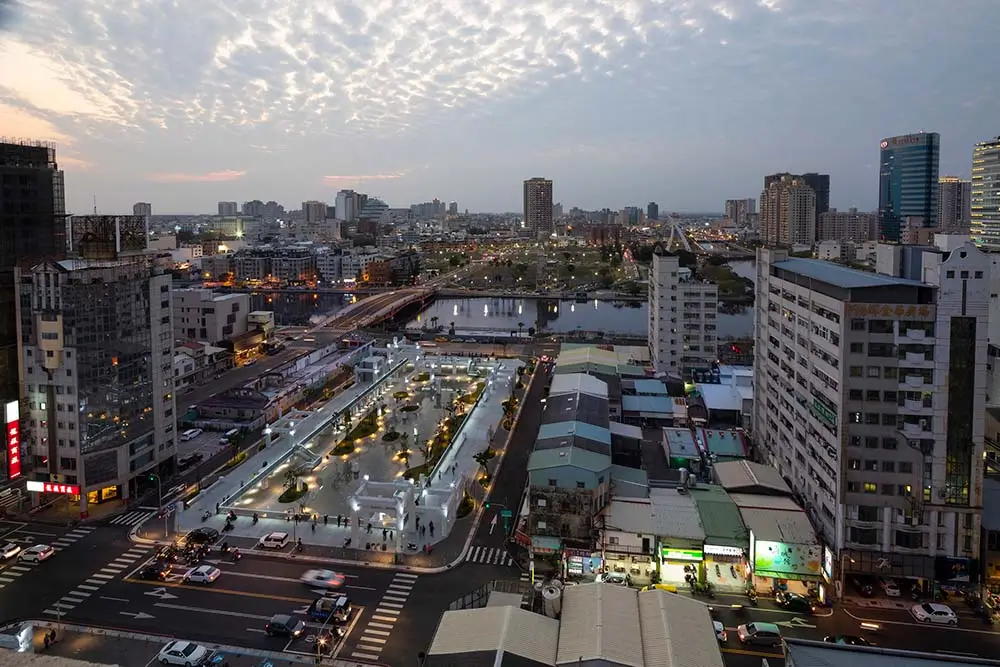 Tainan Spring © Daria Scagliola
Tainan Spring © Daria Scagliola
In the end, the collaboration successfully transformed a neglected mall into the vibrant Tainan Spring, exemplifying the potential of repurposing sites for public use and urban revitalization. This partnership has left a lasting impact on Tainan, evident in the rejuvenated urban landscape, increased visitor numbers, and economic regeneration.
Looking ahead, in the upcoming "Huwei Waterfront Resilient Project," the three partners have once again united in 2023, underscoring their commitment to positive urban development. Located on the grounds of a 19th-century sugar factory, this waterfront project aims to improve water treatment capabilities, establish new urban spaces, and enhance resilience against climate change, with anticipated completion by the end of 2026.
Through ongoing collaborations, the commitment to positive urban development and the lasting impact of sustainable design on community development remains at the forefront of the partnership journey.
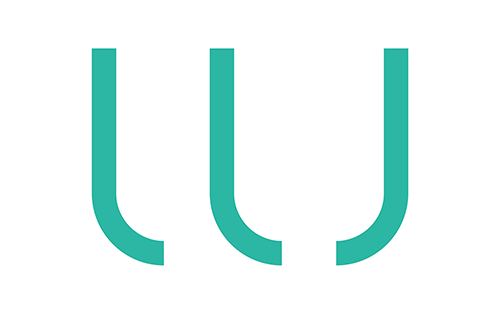
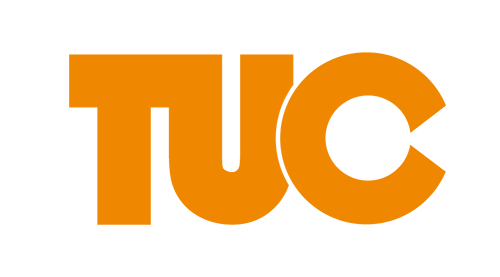
In September 2018, Taiwan witnessed the completion of a monumental project that transformed an abandoned military training ground into the sprawling National Kaohsiung Center for the Arts (Weiwuying), the largest performing arts and music hall in East Asia and the world's largest performing arts theater under one roof. In collaboration with the renowned architectural firms Mecanoo from the Netherlands and Archasia from Taiwan, this international venture breathed life into the heart of Kaohsiung City.
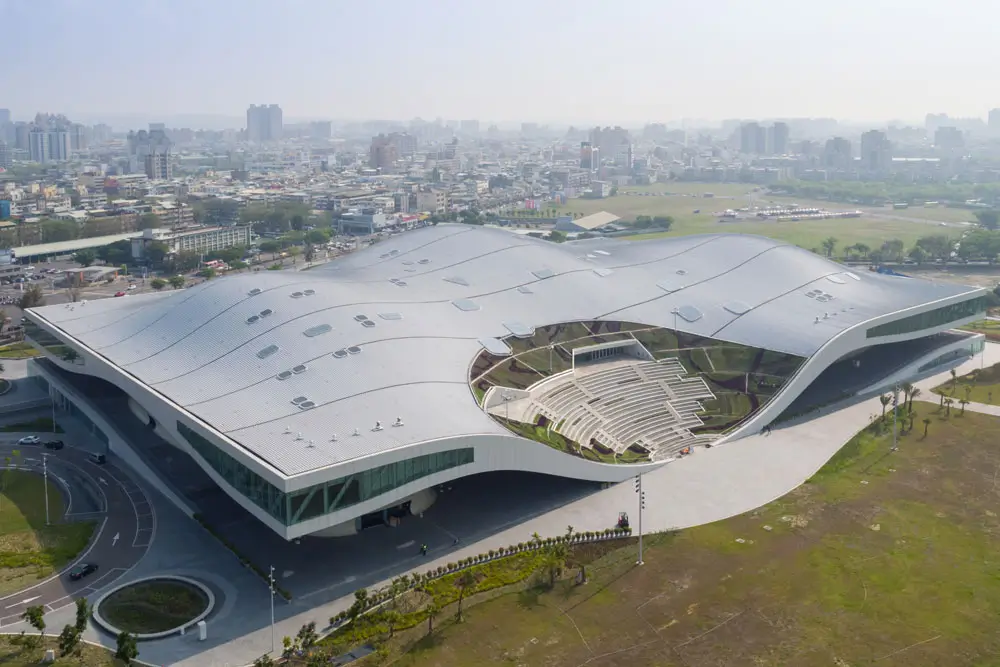 The Center's iconic canopy, resembling a billowing architectural fabric akin to a tectonic
plate, seamlessly integrates into Kaohsiung's urban landscape.
The Center's iconic canopy, resembling a billowing architectural fabric akin to a tectonic
plate, seamlessly integrates into Kaohsiung's urban landscape.
The collaborative journey began in 2007 when the design and construction rights were awarded to Mecanoo and Archasia architects. Initiated by the Executive Yuan in 2003, the Weiwuying Arts and Culture Center Preparatory Office was established in 2006. The project's goal was to revitalize the abandoned military training ground into a vibrant space, incorporating a metropolitan park, an arts center, and a business district.
Mecanoo, globally celebrated for its innovative and sustainable designs, contributed its expertise to this international partnership. On the other side of this collaboration is Archasia, a distinguished Taiwanese architectural firm acknowledged for its profound understanding of local contexts and commitment to high-quality design standards
Starting in 2007 and spanning over 11 years of planning and execution, the construction project reached completion in October 2018, officially establishing Weiwuying.
Located in the heart of Kaohsiung's metropolitan area, Weiwuying occupies a former 65-hectare military compound. Previously fenced off and inhabited by wild, barking dogs amidst dense banyan trees, the site has been transformed into a city "Central Park."
Drawing inspiration from spontaneous street performances, Weiwuying endeavors to democratize art by seamlessly blending formal and informal performance spaces. Designed with accessibility in mind, citizens can now immerse themselves in art and enjoy the surrounding landscape freely. This transformation has breathed new life into the once untamed and historic terrain, lending fresh allure to Kaohsiung.
As the world's largest performing arts theater under a single roof, Weiwuying sprawls over 9.9 hectares of land, boasting a distinctive wave-like design with a floor area of 3.3 hectares. The roof, a wavy façade made of 4,500 aluminum panels, is a remarkable engineering achievement, covering 35,000 square meters. This design makes Weiwuying a global leader in multi-functional performance venues.
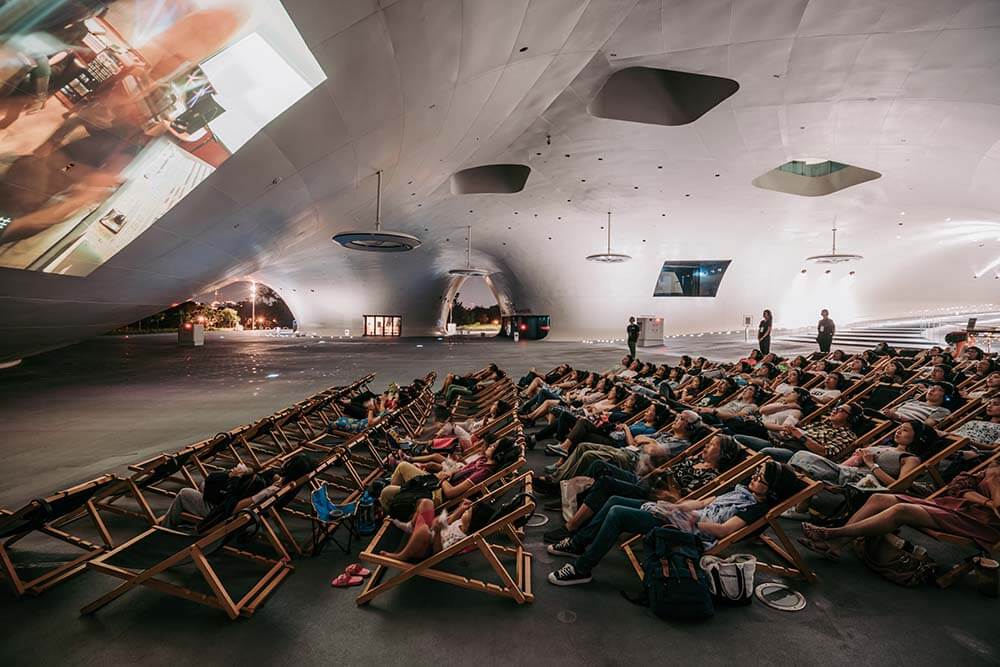
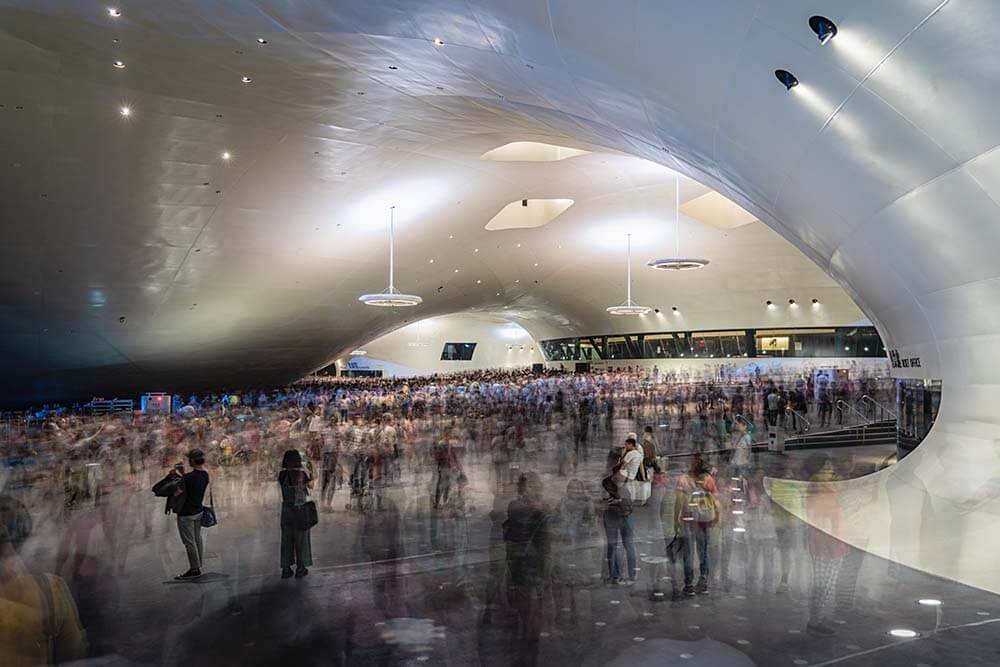
Drawing inspiration from the local Banyan trees, beneath this roof lies the expansive Banyan Plaza, a sheltered public area designed to allow refreshing breezes to flow freely. Residents can leisurely stroll through day and night, engaging in activities like Tai Chi or impromptu street performances along the pathways and informal spaces.
Weiwuying's design combines architectural innovation with functional features, making a space that celebrates cultural richness and artistic energy.
The primary design challenge revolved around the complexity of the oversized double-curved façade. It seemed impossible to find the right expertise for bended metal, prompting one of the architects to say, “ Build it like a boat.”. The link with the shipyards in Kaohsiung was made quickly after, revealing their expertise and providing a surprising and manageable solution. By crossing the language barriers, their professionalism comes together to achieve architectural excellence, offering a fresh perspective that transformed the initially perceived impossible challenge into a feasible endeavor.
Despite the challenges, the success of Weiwuying is largely attributed to the ongoing in-depth discussions and innovative collaboration between Mecanoo, Archasia, and the local government regarding design and construction. Positioned as a significant cultural and artistic landmark in Taiwan, Weiwuying has laid a pivotal foundation for shaping the design guidelines of future architectural projects within the arts and culture domain.
In addition to architectural success, teamwork of over 11 years also allowed the architects to forge close personal relationships that went beyond the workplace. Those who worked on the project formed deep friendships and even lasting marriages, adding an unexpected human element to the tale of collaborative bonds.
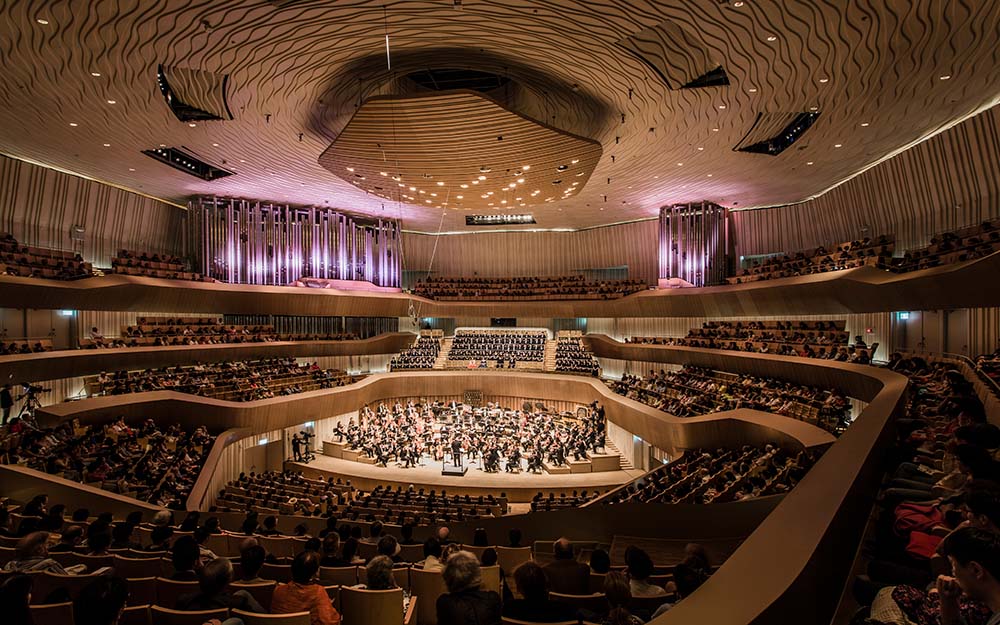 Inside, curving walls expand and contract like the branches of a banyan tree, creating organic
spaces for playing, making, viewing art and taking in performances. The scale of the project is
virtually unprecedented, yet the character of each space remains welcoming and accessible to its
inhabitants
Inside, curving walls expand and contract like the branches of a banyan tree, creating organic
spaces for playing, making, viewing art and taking in performances. The scale of the project is
virtually unprecedented, yet the character of each space remains welcoming and accessible to its
inhabitants
After its completion in 2018, Weiwuying had a remarkable first year. Hosting 270 performances and 409 shows, it attracted over 3.8 million visitors and exceeded 300,000 audiences in ticket sales. The outstanding design of the center has earned prestigious awards, like the 2017 Idea-Tops Award, a 2018 New York Design Award, and a 2019 Architizer A+ Award. Moreover, the center's global recognition, featured in well-known publications such as the New York Times and Time magazine, solidifies its standing as a cultural landmark and a symbol of architectural excellence.
Beyond its architectural success, Weiwuying has also become a driving force for economic growth in Kaohsiung. Increased visitors and cultural activities have created jobs and boosted the local economy. The center plays a vital role in the city's efforts to overcome economic challenges and changing demographics.
As a result of the collaboration that led to the construction of Weiwuying, job opportunities for contractors and subcontractors have flourished. Their invaluable experience has also set the stage for potential triumphs in future ventures.
The key takeaway from this journey is the collaboration that serves as a catalyst for innovation, resilience, and cultural exchange. Mecanoo's global reputation blends seamlessly with Archasia's understanding of the local context, allowing them to navigate challenges and craft the world’s largest cultural landmark under one roof.


With powerful quantum computers unveiling new attack technologies, researchers from the Netherlands and Taiwan have teamed up for nearly 20 years to combat threats to our online information. This collaborative effort involves experts from Eindhoven University of Technology (TU/e) in the Netherlands, along with their Taiwanese counterparts from Academia Sinica and Chelpis. Together, they make our online world more secure working on post-quantum cryptography (PQC). This collaboration aims to prepare against the swift developments in quantum computing attacks, by enhancing digital security.
This collaboration dates back to 2006, a time when only a few researchers possessed the expertise and knowledge required for PQC. Notably, Professor Bo-Yin Yang at Academia Sinica, one of the leading academic research institutions in Taiwan focusing on a wide range of scientific disciplines, and Professor Tanja Lange at TU/e, a Dutch university renowned for its excellence in research and innovation in various engineering fields, spearheaded efforts in advancing PQC methodologies.
The collaboration aims to supplement well-established cryptographic systems, which have served as the backbone of computer security for over 30 years. However, their stability is now threatened by advancements in quantum computing. Cryptography relies on the difficulty of solving complex mathematical problems that are challenging for traditional computers to break. Quantum computers, leveraging the principles of quantum mechanics, can break some of these problems much faster.
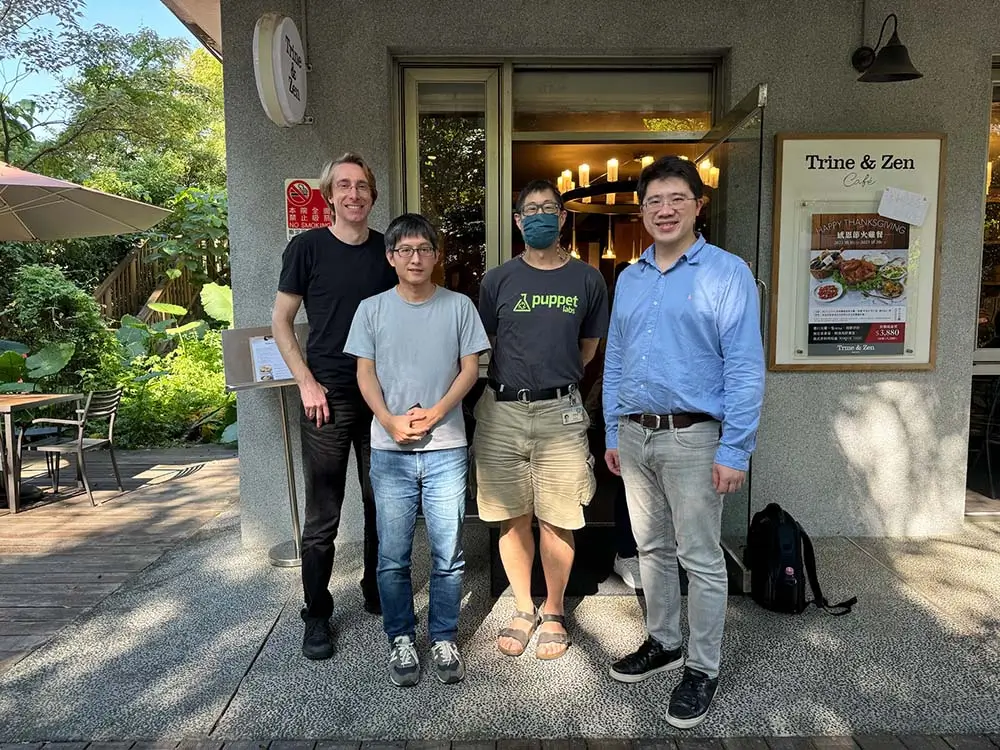
For nearly two decades, this collaboration has covered many research areas in cryptology, including the design, analysis, and implementation of new systems. It also promotes the exchange of knowledge at various levels, from master’s students to professors and industry experts.
Industrially, the collaboration has significantly influenced the cryptography landscape. The jointly developed Ed25519 system, designed in 2011, is now a NIST and IETF standard, utilized in browsers and popular apps like Signal. Recent work has led to one almost finalized NIST standard (SPHINCS+) and two cryptosystems actively deployed, Classic McEliece and NTRU Prime. Classic McEliece is in the process of being standardized by ISO.
On the academic front, the collaboration has yielded numerous scientific publications, jointly organized conferences, summer schools, short-term visits, and six long-term researcher exchanges, resulting in two Dutch PhD graduates securing permanent positions in Taiwan. Additionally, it has produced efficient software packages for cryptographic systems and contributed to the analysis of real-world cryptography deployment.
Governments also recognize the collaboration's impact. Taiwan’s Executive Yuan identified PQC as a critical tech field in its National Core and Key Technology Review Conference (NKTRC) in November 2023. This acknowledgment underscores the importance of PQC in ensuring national security and industrial competitiveness. In the Netherlands, groups at TU/e, Radboud University, and Centrum Wiskunde & Informatica (CWI) contribute to PQC research, while Quantum Delta NL designating it as a key research area. Governments from the Netherlands and Taiwan actively support global attention on PQC, emphasizing the need for a critical mass of researchers for significant advancements.
These achievements have garnered international recognition and positively influenced the cryptography and information security industries, fostering the creation of the Chelpis Quantum Safe Migration Center (QSMC).
In August 2023, Chelpis, a leading company specializing in Quantum security, zero-trust architecture, and end-to-end encryption, inaugurated the QSMC in Taiwan. This center is dedicated to advancing research and practical applications in post-quantum cryptography, serving as a collaborative hub for researchers from Taiwan and the Netherlands. The goal is to foster the global knowledge exchange and drive the real-world implementation of PQC technology.
QSMC offers a comprehensive enterprise quantum-safe solution, including risk assessment, algorithm inventory, upgrade planning strategies, solution implementation, and ongoing maintenance. This approach ensures the protection of corporate information against potential quantum threats, propelling organizations into the era of quantum security. Concurrently, through active collaboration with academic institutions and research organizations, QSMC remains engaged in the ongoing international development and research of PQC algorithms.
Despite being newly established, QSMC has already hosted several PQC events, focusing on knowledge building and sharing insights into Quantum-Safe Migration. These events also provide practical skills for acquiring migration strategies and techniques applicable to various organizations or projects.
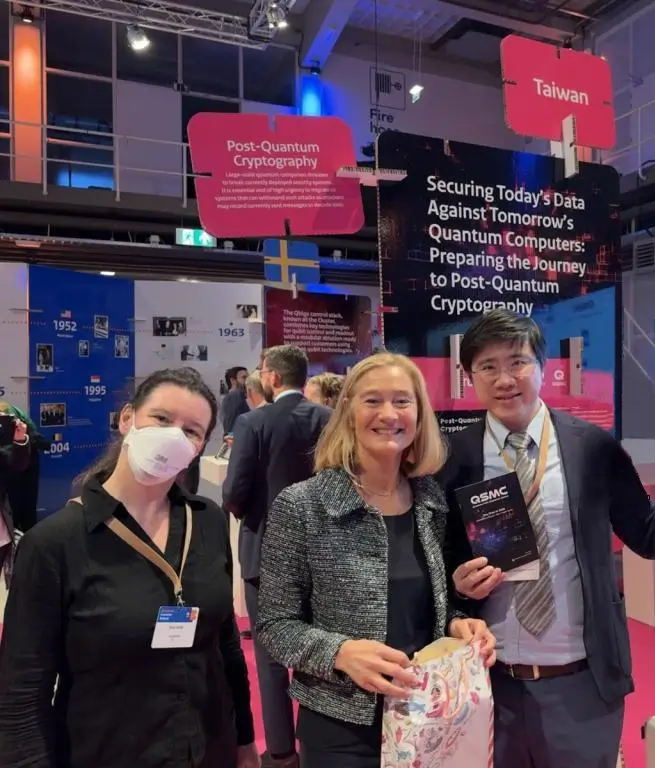
The collaboration between researchers from the Netherlands and Taiwan created unique and interesting stories, adding intriguing chapters to their shared history.
In one remarkable tale, Matthias Kannwischer initially visited Academia Sinica in Taiwan for a six-week research visit, but found himself stranded due to COVID-19 pandemic-induced lockdowns. His unintentionally extended stay evolved into a fruitful collaboration and now, four years later, he remains in Taiwan, actively contributing to PQC research as part of QSMC.
In another fascinating twist of fate, Ming-Yang Chih and Tung Chou, former labmates at National Taiwan University (NTU) from 2008-2010, reconnected after 11 years! Back then, Ming and Tung, were labmates in NTU's Fast Crypto Lab under the supervision of Dr. Chen-Mou Cheng and Bo-Yin Yang. Post-graduation, they diverged—Ming into entrepreneurship and Tung pursuing a Ph.D. in the Netherlands, followed by research in Japan. Fast forward 10 years, Tung returned to Academia Sinica for research, unexpectedly reuniting him with Ming. Adding to this story, Ruben Niederhagen was in the same NTU lab during his first visit to Taiwan in 2009. Meeting Ming and Tung, he collaborated on research projects during his Ph.D studies at TU/e in 2010 and 2011, shuttling between the Netherlands (TU/e) and Taiwan (NTU/Academia Sinica). Later, Tung and Ruben crossed paths during Ruben's postdoc at Academia Sinica, and again when Tung pursued his Ph.D. at TU/e while Ruben was a post-doc there. Today, they are colleagues at Academia Sinica!
Their PhD supervisor from TU/e, Tanja Lange, is currently spending the spring term as a visiting researcher at Academia Sinica, working with the Taiwanese researchers and in particular continuing the long-term collaboration with Yang with which all this began.
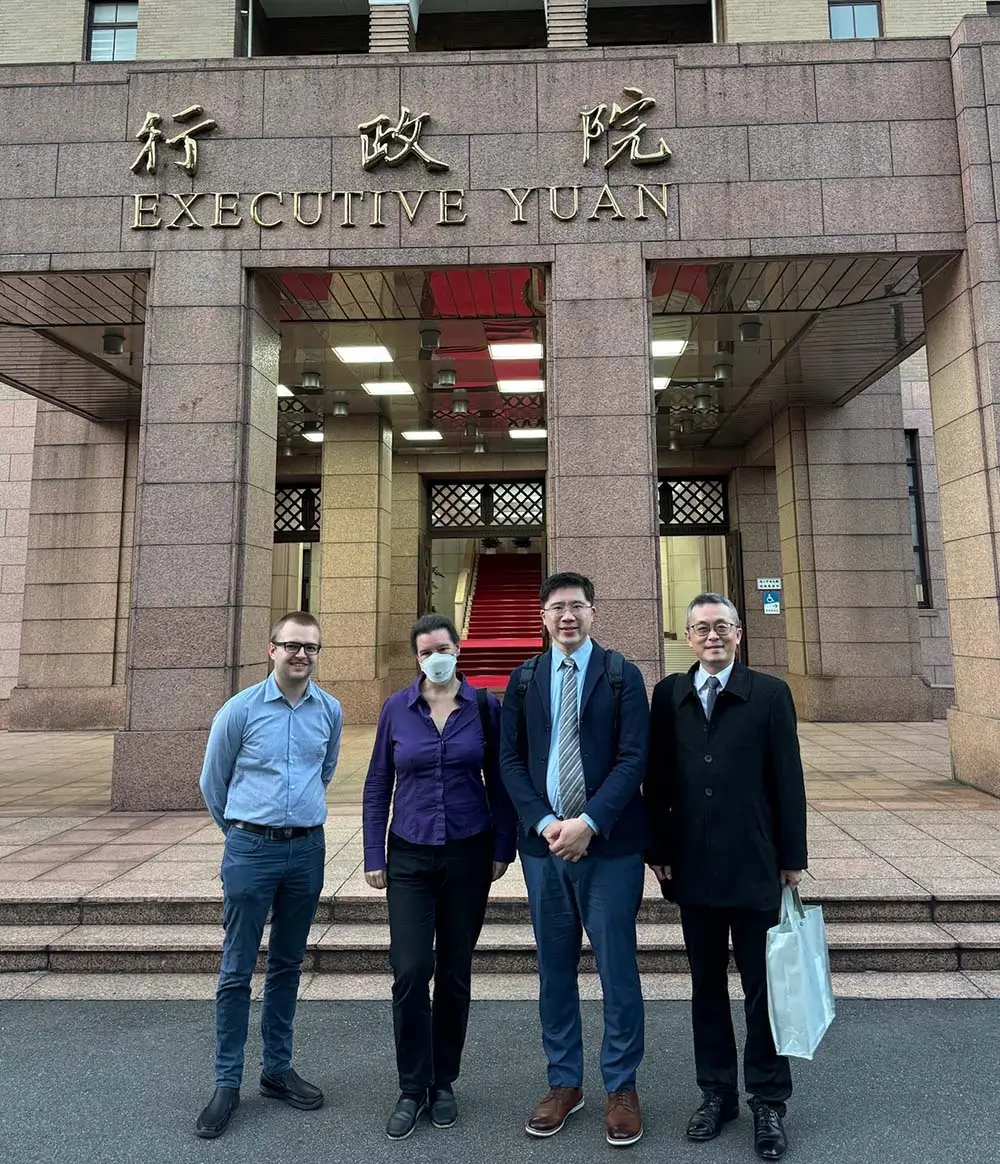
Moving forward, this continuous collaboration is entering a new phase as PQC gains wide-spread adoption, demanding the creation of effective and secure systems for novel applications. The upcoming large-scale deployment of PQC brings new challenges, especially in mitigating security issues arising from potential flaws in cryptographic setups. The combined focus of TU/e, Academia Sinica, and Chelpis is on research and development to enable a safe transition to systems that also resist attacks with quantum computers.
Overall, the lasting partnership between TU/e, Academia Sinica, and Chelpis shows the potential for significant progress and impactful contributions. Sustaining this long-term partnership across multiple generations of researchers is the key to making a lasting difference in the world.

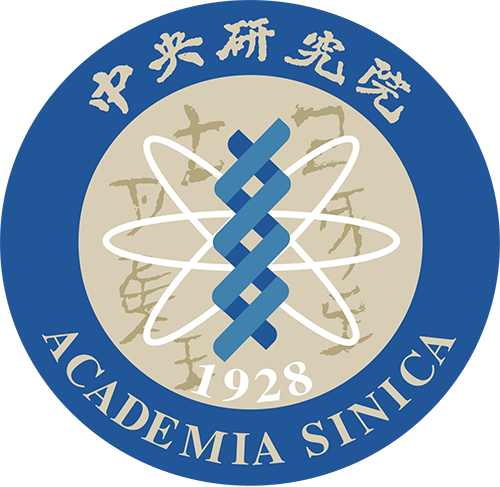

University of Twente and Tamkang University, with other consortium partners (Leiden University, National Tsing Hua University, and National Central University) spanning the Netherlands and Taiwan, unite their expertise in a collaborative venture to address the complex challenge of quantum computing. Their shared vision centers on creating high-quality components for quantum computers, with a particular emphasis on a quantum light factory—a crucial element in light-based quantum computers. The ultimate goal is to prototype a quantum light factory using innovative photonic chips, paving the way for a small, efficient, and cost-effective solution in the future of quantum technology.
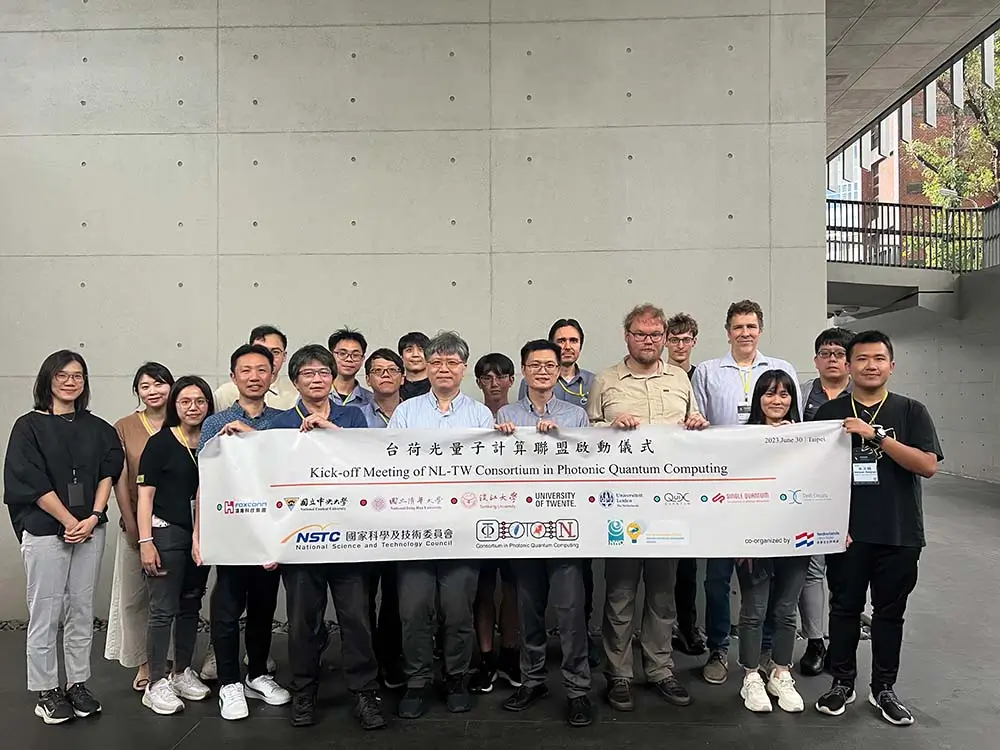 The Kicking-off of the consortium in Taipei in June 2023
The Kicking-off of the consortium in Taipei in June 2023
Led by University of Twente and Tamkang University, the collaboration amongst various academies began via the Call for Consortia in Photonics facilitated by the Dutch Research Council (NWO) and Taiwanese National Science and Technology Council (NSTC) and has spanned 1.5 years. The collaboration aims to solve a pressing issue in quantum computing — the need to produce a substantial number of high- quality components.
Quantum computing, a revolutionary device in information processing, relies on particles with unique properties that are capable of handling extensive data processing. These particles, known as single photons or light particles, have the potential to revolutionize industries like cryptography, drug discovery, and logistics by solving problems considered insurmountable by traditional computers. The collaboration focuses on developing a “quantum light factory,” a ground-breaking platform that manufactures these light particles onto a chip.
The bottleneck in manufacturing these light particles arises from the demand for a significant quantity of top-quality components, exceeding current production capacities. The first steps involve creating accurate verification methods to maintain high quality consistently. The ultimate goal is to advance quantum computing, enabling large-scale and high-performance quantum computers.
Within this collaboration, a major challenge is assembling components from different labs, which demands coordinating various technologies and expertise. Specialists in key domains for quantum computing, including processors, photonic sources, detectors, quality verification, and assembly, work together to tackle this complex challenge.
Uniting experts with distinct roles is a complex yet essential task to ensure a comprehensive approach to challenges. On the Dutch side, Dr. Jelmer Renema oversees assembly and photonic processors, while Dr. Michiel de Dood from Leiden University specializes in photon detectors. The Taiwanese contingent includes Dr. Jun-Yi Wu focusing on component quality, Dr. Ming-Chang Lee from National Tsing Hua University on photonic processors, Dr. Ray-Kuang Lee from National Tsing Hua University and Dr. Yen-Hung Chen from National Central University on photonic sources. Coordinating diverse skills is crucial for effective partnership in building a quantum light factory.
In this ongoing collaboration, the consortium has advanced through early scientific exchanges and experiments in Taiwan and the Netherlands. Focused on assembling components from different labs, the team actively implements solutions with a strong emphasis on establishing a common interface for diverse photonic components. Looking ahead to the five-year photonic quantum computing consortium, the collaboration's focus extends to the development of fault-tolerant photonic qubits. This involves initiating exchanges and reciprocal experiments, marking a commitment to long-term advancements in quantum computing technology.
Despite being in the preliminary stages, the collaboration is dedicated to creating a common interface, addressing the intricate integration associated with quantum components. This common interface serves as a bridge, connecting diverse technologies and expertise within the partnership, ensuring seamless coordination in manufacturing quantum light factory components.
The interface plays a crucial role in navigating complexities related to the high- intensity nonlinearity of photonic sources, ensuring the faithful operation of photonic processors, enhancing the sensitivity of photonic detectors, and addressing the need for a novel verification theory, including considerations for temperature changes. Quantum computing systems usually operate at extremely low temperatures, close to absolute zero, to minimize interference and preserve the delicate quantum states of particles. Assembling components in environments with consistent temperatures is also challenging, and the common interface is crucial in overcoming these obstacles.
Serving as the unifying thread, the common interface guides the collaborative effort through these challenges, driving progress and success in the advancement of the quantum light factory.
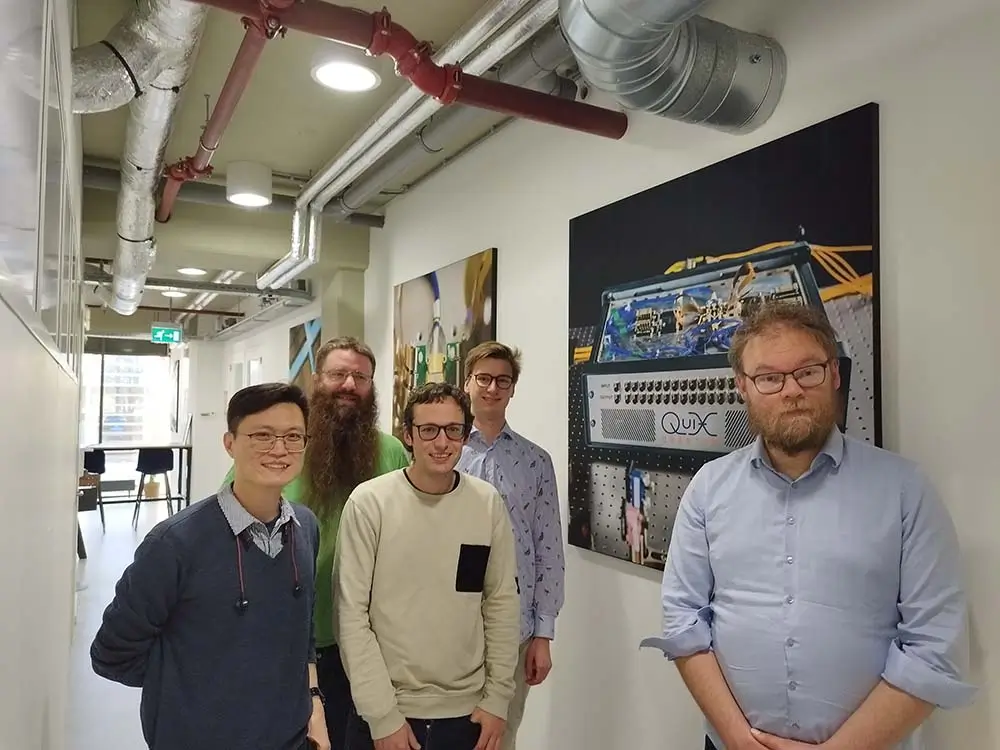 Jun-Yi visited Jelmer's group and Quix in Twente in 2023
Jun-Yi visited Jelmer's group and Quix in Twente in 2023
In the intricate teamwork, a fascinating story unfolds, highlighting the right timing and people involved. This collaboration started when Dr. Jun-Yi returned to Taiwan, and Dr. Jelmer was looking for people to work with. When Dr. Jun-Yi moved from the University of Tokyo to Tamkang University, he got a new job, creating the perfect opportunity.
In May 2021, just three months after Dr. Jun-Yi's move, Dr. Jelmer sent Dr. Jun-Yi an important email. It told Dr. Jun-Yi about a chance to work together on photonic projects between the Netherlands and Taiwan, fitting perfectly with their collaboration goals. Things continued to go well as Dr. Jun-Yi received NSTC’s support, a crucial qualification for the consortium program, emphasizing how important timing is in this collaborative story
The story of being in the right place at the right time continues as Dr. Jun-Yi connected with Dr. Ray-Kuang, who contributed his expertise in photonic sources to the collaborative network. On the Dutch side, a similar story brought Dr. Martin and Dr. Michiel, experts in photonic sources and detectors, into the consortium. These fortunate meetings of minds, in the right places and moments, ultimately bring together the diverse pieces of the collaborative puzzle, pushing the ambitious goal of fault-tolerant photonic qubits into reality.
Despite the challenges of creating high-quality quantum components, a strong collaborative spirit prevails with shared goals within this partnership. The combination of varied expertise from different engineering fields is the foundation of this collaboration. Regardless of distinct scientific backgrounds, there exists a common thread that unifies us—a collective aspiration to achieve something extraordinary in the realm of quantum technology.
Physical visits, integral to the collaborative process, have proven invaluable. Serving as catalysts, they not only clarify project goals but also forge deeper connections among collaborators. Beyond the complexities of photonic sources, processors, detectors, and assembly, it is this shared commitment and understanding that act as driving forces, propelling the collaborative effort toward pioneering advancements in the development of the quantum light factory.
The shared vision of University of Twente and Tamkang University, alongside their international partners, underscores the realization of a small, efficient, and cost- effective solution in quantum computing.
The core message embedded in this collaboration is clear: international collaboration is not merely beneficial but an essential ingredient for success in a swiftly evolving field. The concept goes beyond simple math, reflecting the idea that 1+1 can indeed be greater than 2, meaning that the collective efforts of a diverse team can achieve more than the sum of individual contributions.
As we look to the future, the team spirit remains unwavering. Expectations are set for continued exploration and advancements in quantum computing, with a specific focus on developing fault-tolerant photonic qubits. This collaborative journey, driven by a shared vision, exemplifies the power of unity in propelling scientific progress forward.
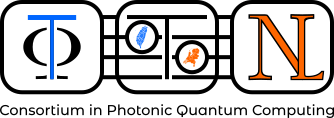


Modern living relies fundamentally on satellite communication, or sat com, a silent force driving our increasingly interconnected world. In the vast expanse of satellite communication, a three-way collaboration among Altum RF, TMY Technology Inc. (TMYTEK) and Industrial Technology Research Institute (ITRI) unites for innovation, laying the groundwork for the new Antenna and Semiconductor Integrated Modules for Satcom System (AIMS) project.
The AIMS project pioneers the integration of advanced millimeter-wave antenna-in-package (AiP) modules, enhancing energy efficiency and cost-effectiveness in satellite communication systems. This innovation optimizes performance and manufacturing processes, marking a significant leap in the evolution of satellite technology.
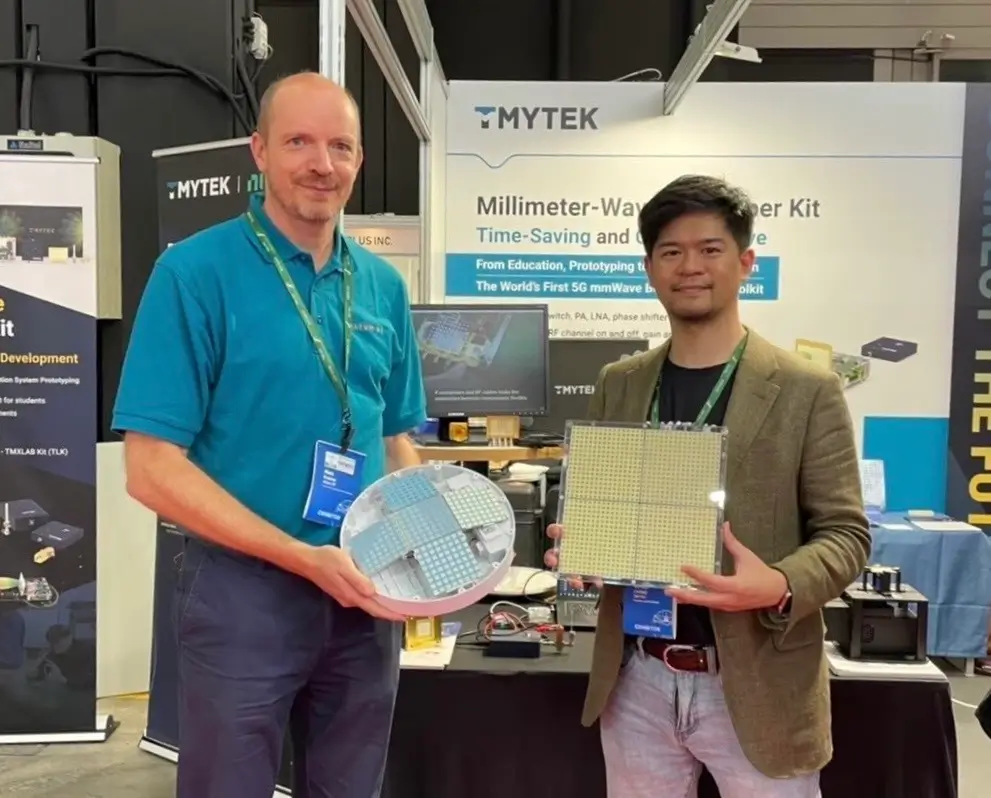 AltumRF TMYTEK at EuMW 2022 in Milan
AltumRF TMYTEK at EuMW 2022 in Milan
Originating from the 2021 Eureka Globalstars Call with Taiwan, a strategic initiative that fosters collaborative research and development (R&D) projects, the AIMS project represents the spirit of international R&D cooperation. Launched in August 2022 as a part of their two-year collaboration, this project highlights Altum RF, TMYTEK and ITRI’s collective vision in advancing satcom innovation.
In this collaboration, Altum RF, a leading Netherlands-based provider of high-performance radio frequency (RF) and millimeter-wave semiconductor solutions, partners with Taiwan's TMYTEK and ITRI to spearhead groundbreaking advancements in satellite communication through the AIMS project.
Altum RF brings its profound expertise in designing high-frequency GaAs and GaN (Gallium Arsendie and Gallium Nitride) semiconductor components, ITRI leverages its applied technology research capabilities, and TMYTEK specializes in mmWave solutions. Under the Eureka framework, they aim to integrate a GaN semiconductor power amplifier, a silicon-based beamformer IC, and an antenna into a phased array module. This module can address the pressing need for widespread internet access and the surging demand for high data transmission, particularly in remote regions. The ultimate goal is to increase the efficiency of satellite communication, thereby advancing global connectivity.
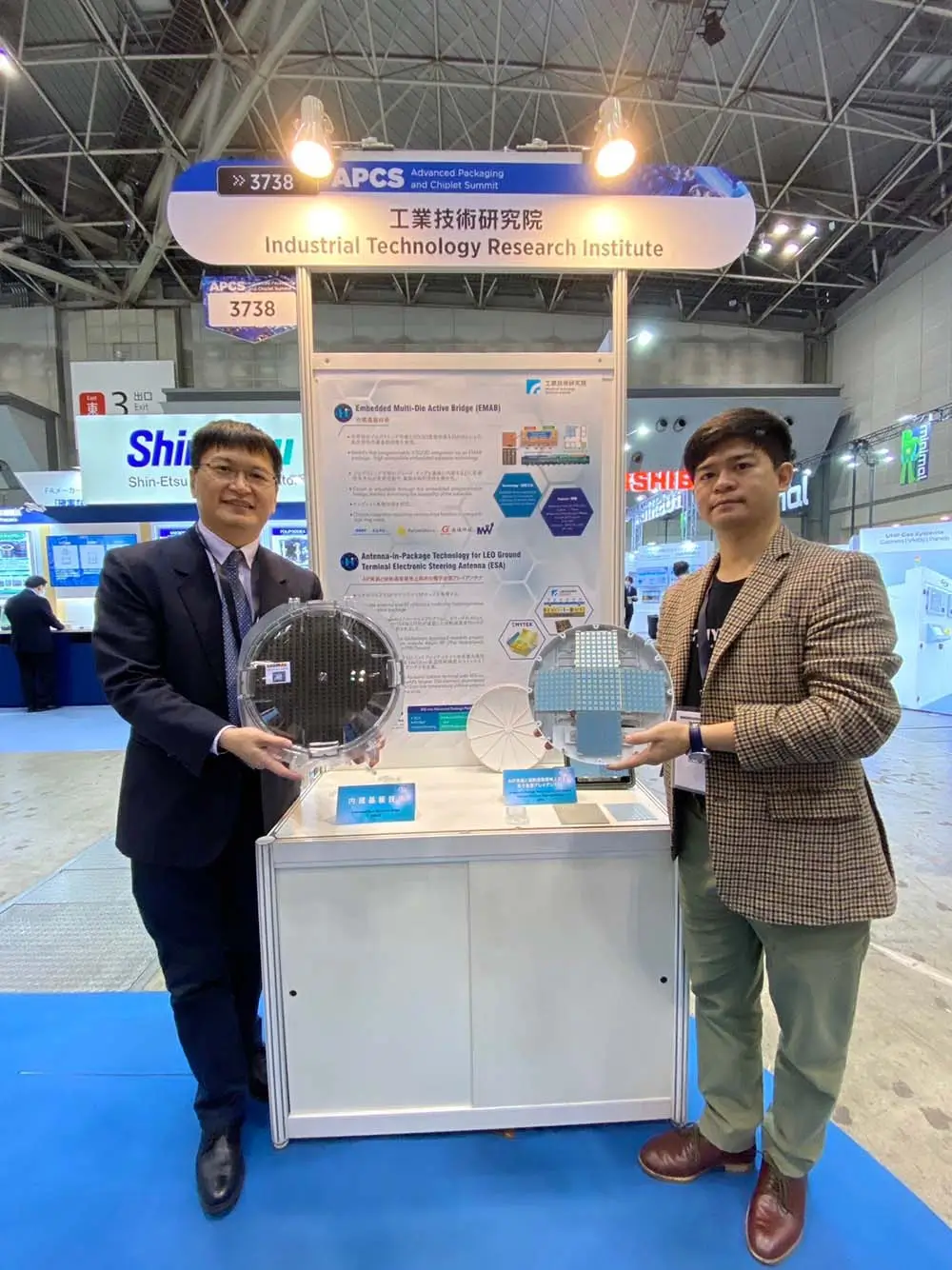 ITRI TMYTEK at Semicon Japan 2022
ITRI TMYTEK at Semicon Japan 2022
Satellite communication technology has changed dramatically over the last couple of years due to developments in LEO (Low Earth Orbit) satellites. These satellites orbit very close to Earth, typically between 160 km and 2,000 km (99 to 1,200 miles) above Earth's surface, allowing for lower latency (faster communication) but requiring a large constellation of satellites (in the case of Starlink eventually over 10,000) to provide global coverage.
These LEO satellites are lighter and cheaper compared to the ‘older’ GEO (Geo-stationary Earth Orbit) satellites. However, they are moving over Earth at a high speed, making a communication link with the ground terminals on earth not straightforward.
These ground terminals make use of so-called ‘phased array antennas’. A phased array antenna consists of an array of many little antenna elements each containing a little transmit and receive semiconductor component. In this way an electronic beam can be created that can electronically be steered, so it can track the LEO satellite that is moving over the earth. Using a conventional parabolic dish antenna is not an option as it cannot move fast enough.
Today’s components and technology of these phased array ground terminals are far from perfect and are still costly. The collaboration aims to address the issues and revolutionize the satellite communication sector by developing an AiP module, enhancing efficiency and accessibility.
By combining innovative GaN-based high frequency amplifiers and an antenna integration process, improvement will be achieved on energy efficiency, power output, and overall cost structure.
The AIMS project marks a paradigm shift in satellite communication, promising not only enhanced energy efficiency but also cost-effectiveness and adaptability for high-volume, low-cost manufacturing.
Designing revolutionary products is always challenging, and crafting the new GaN amplifier for the AIMS project is no exception. The intricate design process of semiconductor components involves various stages, from concept generation and material selection to circuit design and fabrication, wafer testing, and optimization. This complexity heightens with the nature of the international collaboration, which began in 2022 during the COVID-19 pandemic and associated travel restrictions.
The design cycle for the GaN amplifier demanded a sequential process, with each stage requiring perfection before moving on to the next. Though concept generation and material selection start easily, the challenges of this collaboration intensify during remote tasks like circuit design, fabrication, wafer testing, and optimization. The complexity increases as the final product must fit into the AIMS module, managed by ITRI.
Working remotely increased the difficulty, and the team met only once physically in the first year of collaboration. The first physical meeting took place six months into the collaboration, in 2023, when COVID-19 restrictions were lifted. This crucial face-to-face meeting covered two intense days at TMYTEK's office. During these days, collaborative sessions featuring whiteboard drawings and in-depth discussions were held, allowing Altum RF to design the appropriate product for seamless integration into the AIMS module.
About a year later, with dedicated support from TMYTEK's foundry team, the collaboration achieved a significant milestone by producing a workable component.
In the collaborative spirit of the AIMS project, Altum RF, TMYTEK and ITRI exchanged technical insights, feedback for improvement, and exploration of alternative manufacturing process. Without predefined requirements, the power amplifier design prompted extensive discussions on size reduction and thermal heat management, resulting in trade-offs among collaborators. Confronted with uncertainties and constraints, the team maintained a result-oriented approach, and everyone are dedicated to achieving the same goal.
The success of this collaboration is informed by all parties’ commitment to results-oriented work and expertise in the technology. It is also rooted in the team’s ability to overcome geographical distances and communicate effectively, also in technical terms. Despite diverse origins, a shared engineering background enabled the team to approach problem-solving logically and systematically, reducing cultural barriers. Each team member’s openness in communication, with a focus on results, played a key role in overcoming challenges.
Looking ahead, the collaboration remains ongoing, with potential for future endeavors. The maturity of Taiwan's semiconductor industry, covering everything from foundry to packaging and the rest of the ecosystem, creates opportunities for sustained collaboration. The past two years of achievements form a strong basis for future collaborations, leveraging collective expertise and dedication towards innovation.



While celebrating its 150-year milestone in 2023, HEINEKEN, the popular beer brand, shifted its focus from festivity to a crucial mission—sustainability. Recognizing their business should extend beyond beer, HEINEKEN partnered with Spring Pool Glass, a Taiwanese company specializing in recycled glass, to create a meaningful solution.
Together, they created the "Sustainable Cup," a unique expression of commitment to environmental care. This joint effort, guided by the Industrial Development Administration (IDA) and the Ministry of Economic Affairs of Taiwan, stands as proof of shared dedication and a balanced mix of business and environmental responsibility in their path towards a greener future.
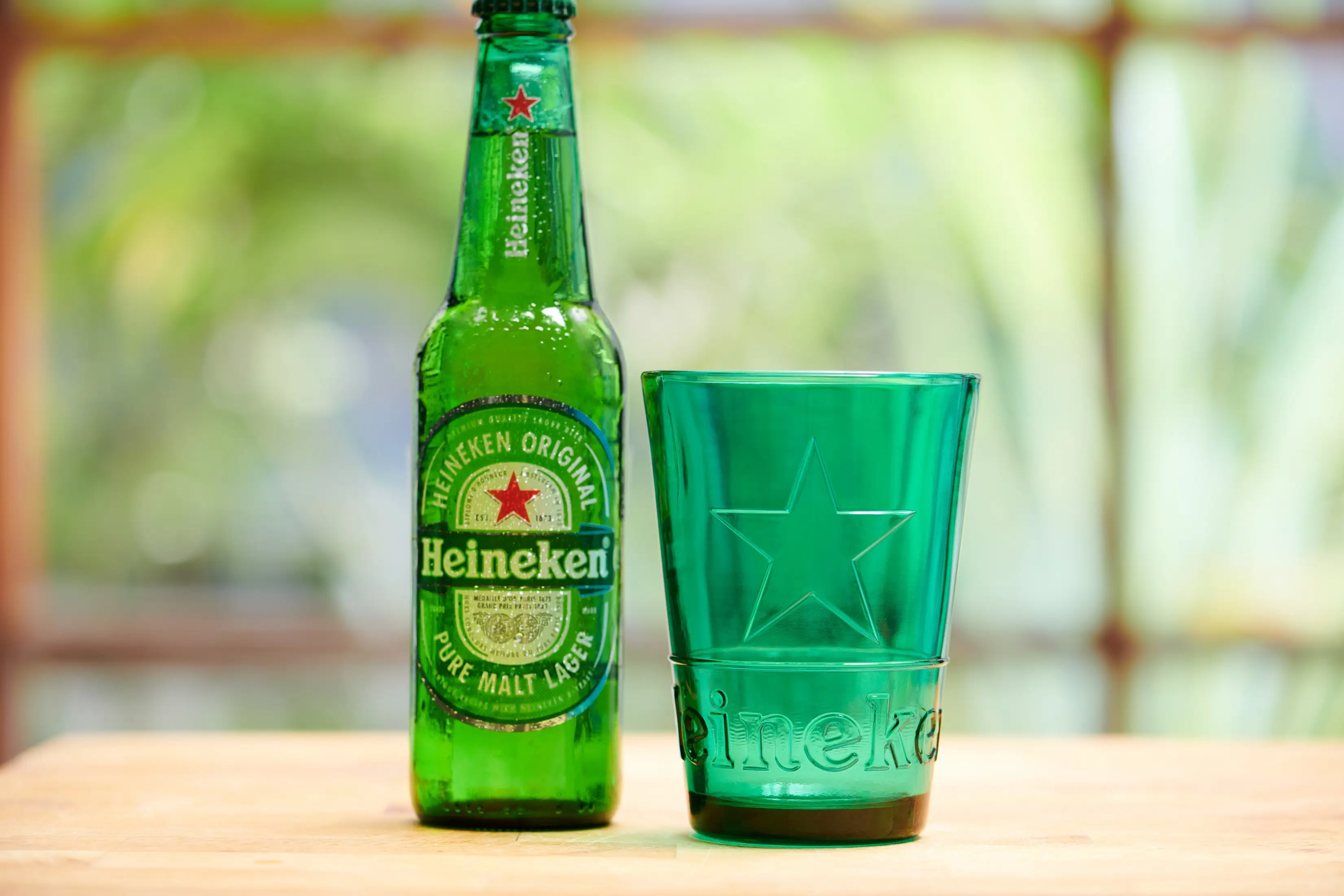 Heineken Green Glas
Heineken Green Glas
The driving force behind this alliance was a response to the pressing challenge of glass recycling in Taiwan. Despite an impressive glass recycling rate of 90%, the lingering issue of effectively repurposing recycled green glass poses a persistent environmental concern. This marked the beginning of a collaboration aimed at seamlessly integrating sustainability into the core operations of HEINEKEN.
With the support of local legislative authorities, HEINEKEN partnered with Spring Pool Glass, Taiwan's premier waste glass recycling company, ranked as the world’s second-largest after Switzerland. Operating five cutting-edge processing and reprocessing facilities in Hsinchu and Miaoli, Spring Pool Glass contributes significantly to about 70% of Taiwan's recycled glass. With over 50 years of industry experience since 1961, the company has consistently handled and reprocessed more than 100,000 tons of glass annually.
In this collaboration, each partner plays a vital role. Spring Pool Glass, leveraging its expertise and facilities, is responsible for collecting, recycling, and then delivering green bottles to the glass factory for melting and bottle production. HEINEKEN takes on the task of promoting the “Sustainable Cup,” engaging consumers and ensuring distribution through retail partners. Behind the scenes, the Industrial Development Administration tirelessly explores possible solutions.
The collaboration aligns with HEINEKEN's commitment to sustainability and resonates with their dedication to being a responsible corporate citizen in the regions where they operate.
The most significant challenge for brands lies in overcoming the constraints of conventional budget planning, such as predetermined limits for promotional item expenditures. HEINEKEN and Spring Pool Glass have made a joint effort to explore the possibility of making recycled glass within their budget. Through the journey of brainstorming choices of the glass product type (including bottle versus cup), product design, and a trial-and-error process of production, they created the green glass that represents both the brand and its spirit: "Sustainability."
To start the recycling process, the recycled material undergoes a crushing process, breaking it down into smaller pieces. These crushed glass particles are then melted at high temperatures, transforming them into a molten liquid form. Subsequently, the molten glass is carefully molded into the desired shape, forming the “Sustainable Cup.”
One notable aspect of this process is the challenge posed by the high-temperature cooling phase. As the molten glass takes shape in the molding stage, it must undergo a controlled cooling process. The difficulty arises because glass, especially at a high temperature of 800oC, becomes more resistant to breaking. However, as the molten glass cools down rapidly, the drop in temperature can induce stress within the material. This stress, if not managed properly, can lead to imperfections or even breakage in the final product. Managing the balance between high-temperature molding and controlled cooling is crucial to ensuring the durability and quality.
Another challenge with making the “Sustainable Cup” lies in engraving a complex logo on the front of the cup. The design includes two circles — the top features "HEINEKEN Original," and the bottom proudly displays "Pure Malt Lager." In the center, it celebrates "150 Years of HEINEKEN," with an added touch of history stating "sin ce 1837."
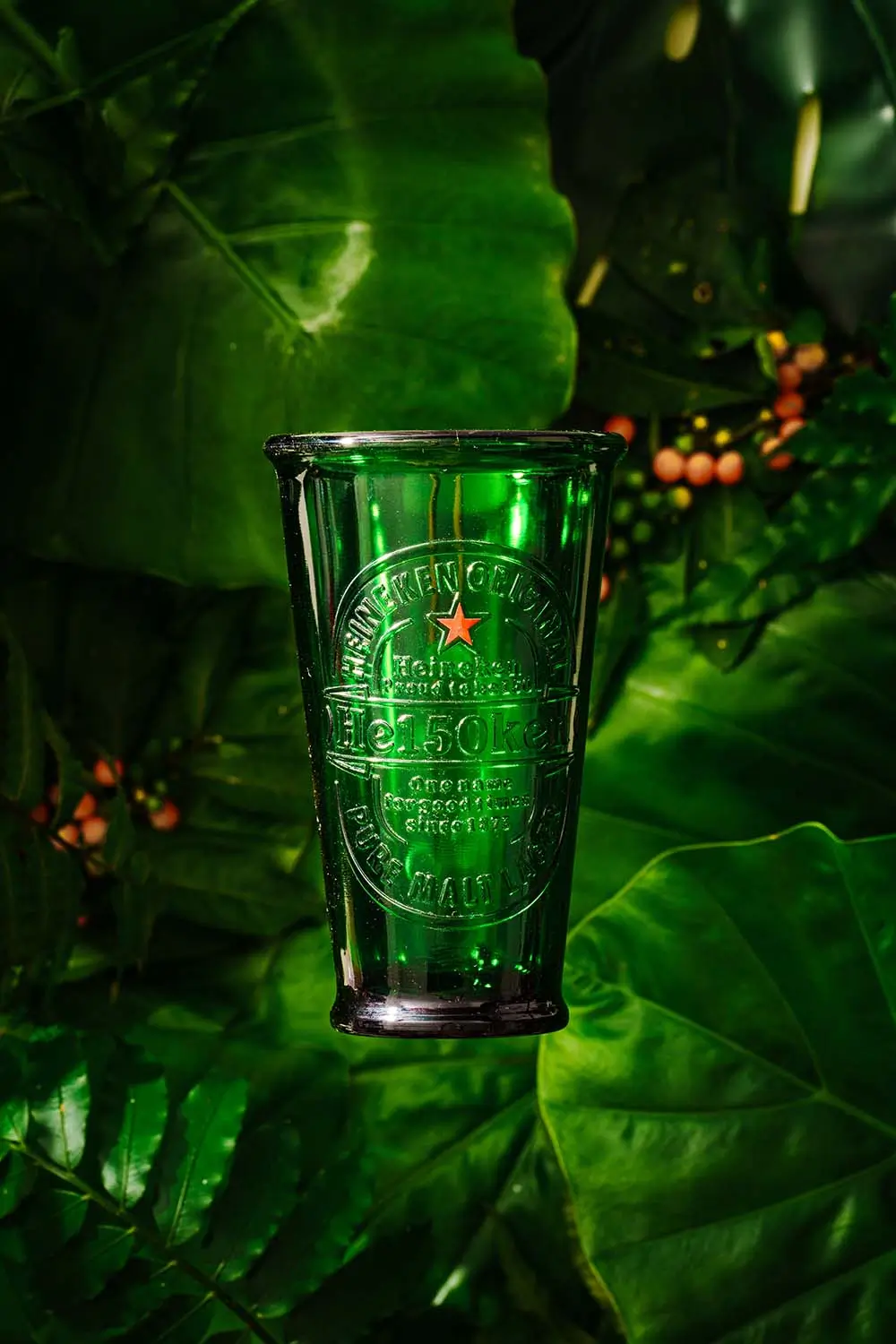

To tackle the challenges of glass breakage, Spring Pool Glass demonstrates efficiency and expertise. Through their advanced facilities, skilled craftsmen, and streamlined processes, they have skillfully navigated the complex process of repurposing HEINEKEN’s recycled green glass
The teamwork between HEINEKEN and Spring Pool Glass showed real results. The "Sustainable Cup," made of recycled green glass, became a symbol of HEINEKEN’s dedication to the circular economy. Together, HEINEKEN and Spring Pool Glass have crafted a trendy cup with a stylish logo, turning sustainability into a fashionable statement. In 2023 alone, they produced over 8,000 of these distinctive cups, each not just serving as a beer cup but also finding a second life as a decorative vase — a cup that makes a positive impact while adding a touch of style to everyday living.
Although the making of the “Sustainable Cup” is a challenging process, HEINEKEN envisions an expansive future collaboration with Spring Pool Glass. The viability of expanding the recyclable green bottle system is accelerating, with plans set in motion once the HEINEKEN Pingtung brewery is officially operational. This strategic move aims to maximize the efficiency of glass repurposing.
Beyond their ongoing efforts to reduce glass importation and introduce a returnable green bottle system, the roadmap also includes local sourcing of new green bottles. This ambitious collaboration seeks to leverage Spring Pool Glass's established green bottle production capabilities and widen the scope of glass waste reduction.
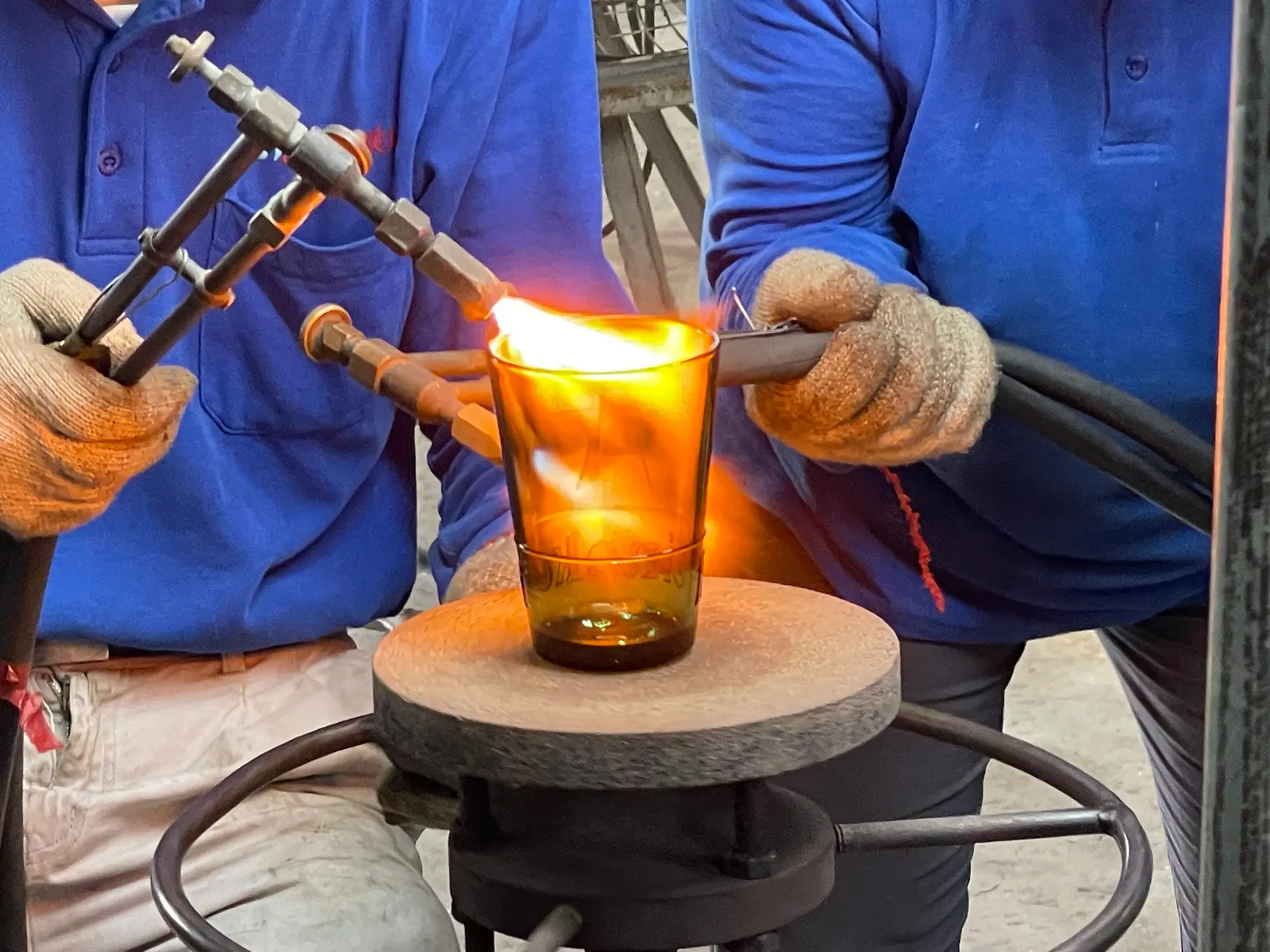 Molten glass takes shape in the molding stage
Molten glass takes shape in the molding stage
While the "Sustainable Cup" doesn't primarily focus on the volume of glass consumption, it stands as a tangible example of a circular economy—a testament to HEINEKEN's commitment to a sustainable and responsible future. Amid HEINEKEN's 150th-year celebration, the partnership with Spring Pool Glass symbolizes dedication to sustainability, reinforcing the key takeaway that HEINEKEN, crafting greener moments, is paving the way for a more environmentally responsible Taiwan.


Fueled by growing unhappiness among nurses worldwide, a health revolution centering around the philosophy of "Happy Clients, Happy Nurses" is underway. The Buurtzorg Model, originating from the Netherlands, started this movement, emphasizing holistic care through nurse-led, self-managing teams
This transformative movement reached Taiwan, capturing the attention of Taiwan Home Nursing (THN), a healthcare startup guided by three visionary co-founders. In 2018, THN enthusiastically partnered with Buurtzorg Asia, creating the Buurtzorg-THN alliance. Together, they revitalized the traditional approach by crafting a healthcare approach with a focus on kindness, teamwork and exceptional home care.
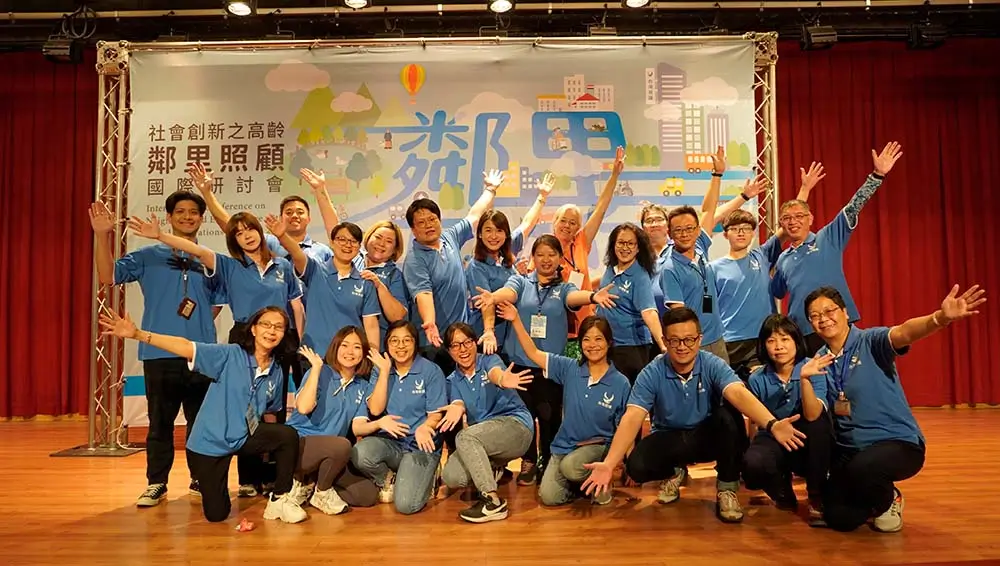 Vibrant and Happy Team Spirit
Vibrant and Happy Team Spirit
Taiwan, faced with the challenges of a rapidly aging population, aimed to redefine care standards with its Long-term Care Plan 2.0 policies in 2015. While crossing the UN threshold for an aged society in 2018, and anticipating hyper-aging by 2026, the plan seeks to address the surging demand for long-term care, prioritizing high-quality, personalized care to enhance individuals' independence and overall quality of life.
Recognizing the challenges in Taiwan's home care industry, THN seeks to adopt the Buurtzorg model as a possible solution for Taiwan. Buurtzorg’s model is aligned with Taiwan's Long-term Care 2.0 policies, offering a new perspective to address issues like low efficiency, workforce shortages, fragmented services, and a lack of a holistic mindset in healthcare.
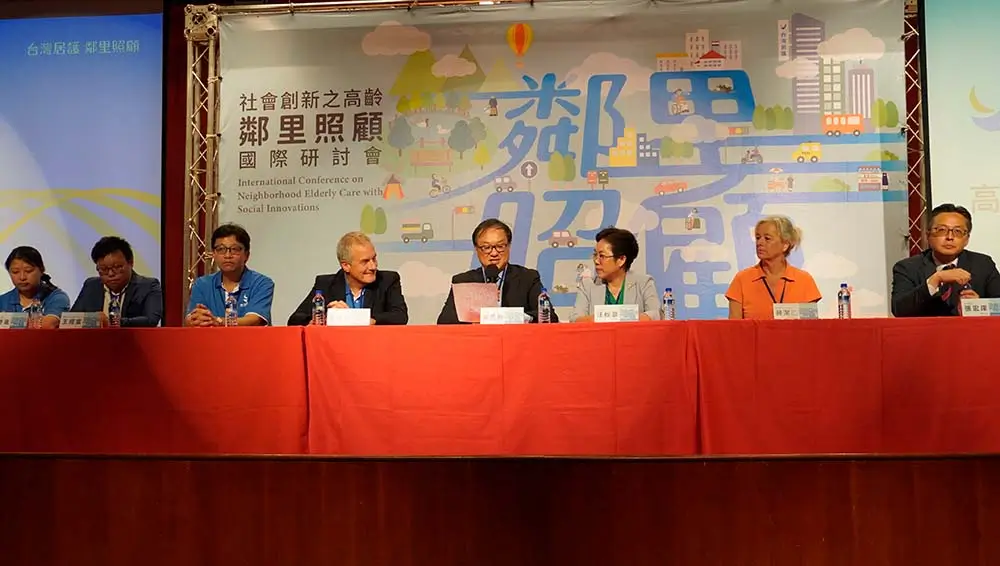 International Conference on Neighborhood Elderly Care with Social Innovations jointly hosted by
THN and Buurtzorg on 14 Sep. 2023
International Conference on Neighborhood Elderly Care with Social Innovations jointly hosted by
THN and Buurtzorg on 14 Sep. 2023
Addressing initial challenges in Taiwan’s healthcare system, the collaboration between THN and Buurtzorg successfully integrated Buurtzorg’s “neighborhood” concept into Taiwan neighborhoods. The word “Buurtzorg” in Dutch means “Neighborhood” (Buurt), and “Care” (zorg). so, the “Buurtzorg model,” is a nurse-led model for comprehensive homecare that supports independent living in a community setting. It is guided by a belief in “humanity over bureaucracy.”
As the tenth international partner of the Buurtzorg organization, Buurtzorg provides THN with branding, advisory support, online education, and physical visits. THN, in turn, takes on the role of delivering local home and community care services, carrying the Buurtzorg brand, and sharing experiences both locally and globally.
Moreover, THN's effective use of IT in healthcare has transformed the nursing sector, emphasizing cost reduction without compromising care quality. THN has developed an online IT platform for logistics support, a peer-coaching technique, and neighborhood care information. This IT system modularizes all professional services and daily activities, allowing THN to adapt to the rapid changes in the care market and governmental policies, and aims for replication and rapid expansion in the future.
The shift to outcome-based payments encourages caregivers' efficiency, empowering them to continue delivering the best services. THN’s strategic use of technology has built a good reputation, boosted revenue, and demonstrated how IT can transform financial and care quality goals
The word "buurtzorg" in Dutch term means ”neighborhood care." Buurtzorg provides home-based care to people who need assistance with daily activities due to illness, disability, or aging. Buurtzorg differs from traditional healthcare in the following:
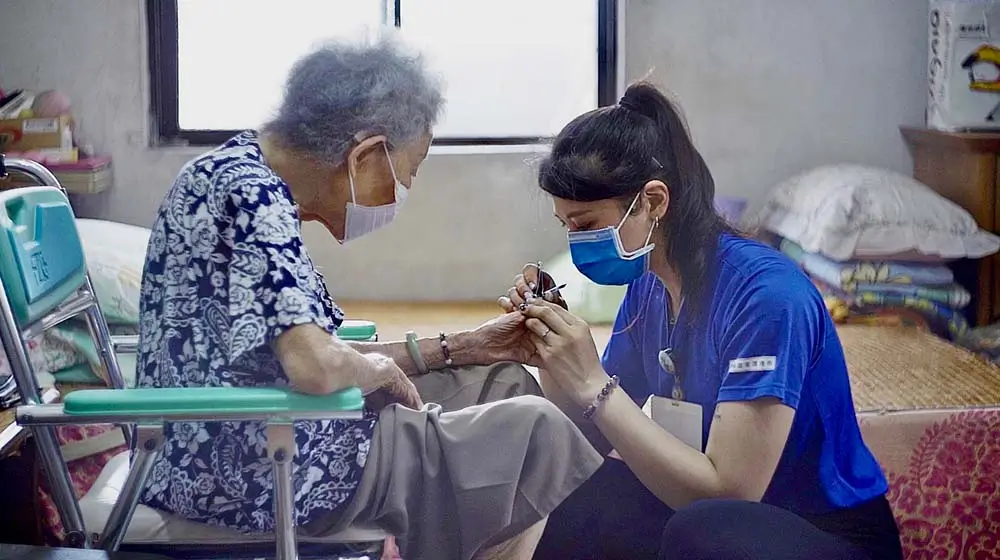 Caregiving at Client's Home
Caregiving at Client's Home
Unlike traditional home-care organizations with hierarchical structures, Buurtzorg operates through self-managing teams of nurses and caregivers. It sparked a positive shift in Taiwan's home care, laying the foundation for a transformative Buurtzorg-THN partnership.
In the early days of the Buurtzorg-THN collaboration, differences in healthcare systems, cultural differences, and regulatory frameworks required careful consideration. They established a model for international cooperation in healthcare, emphasizing adaptability and mutual respect, to strengthen their collaboration.
Through regular virtual meetings, advanced online tools and dedicated communication platforms, they successfully navigated through communication barriers and time zone differences. When the Covid-19 pandemic hit in 2020, these tools became even more crucial, highlighting the collaboration's resilience in the face of unforeseen challenges.
Taiwan, initially seen as a small market, turned out to be a surprising success story. Buurtzorg’s initial focus was on larger potential markets like China, Japan, and Korea. However, despite the limitations of the Taiwan LTCI system, the THN team showed an impressive implementation of key elements, such as effective team management and a supportive back office, showcasing their ability to attract talent and create a positive working environment.
THN's achievements already exceeded Buurtzorg's expectation within the first year of collaboration, when the number of clients and the staff recruitment rate quickly reached the originally planned figures. In five years, staff in Taiwan surged from 30 in 2018 to over 500 in 2023, while service areas expanded from New Taipei City to other major cities. Aside cultural exchanges are taking place through bi-annual visits and online training, illustrating a vibrant workplace culture.
THN received recognition such as the Enterprise Excellence and Innovative Business Awards by the Ministry of Economic Affairs in Taiwan. This unexpected triumph made the partnership even stronger and the THN-Buurtzorg collaboration serves now as a role model for expansion elsewhere.
By empowering nurses and caregivers, and cultivating a holistic mindset, the Buurtzorg Model streamlines Taiwan’s healthcare services, boosts efficiency, and improves overall care quality.
Looking ahead, THN and Buurtzorg plan to collaborate even more in education, IT, and healthcare innovation. They want to share knowledge through educational initiatives and explore new technologies in healthcare to make services better. The goal is to continuously enhance patient care
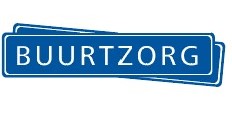
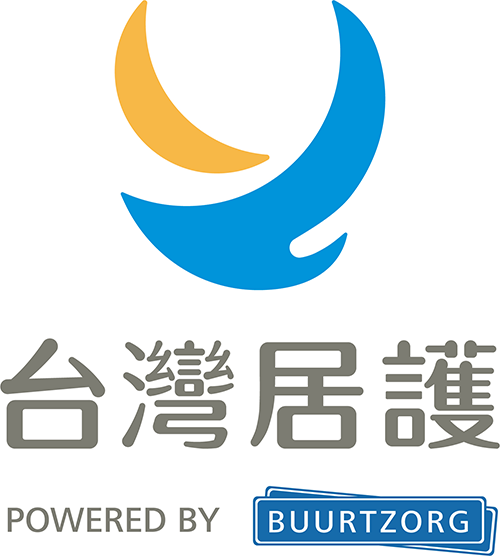
In the heart of Taipei, where tradition meets innovation, a cross-cultural collaboration unfolded between architectural giants OMA / Rem Koolhaas & David Gianotten and KRIS YAO | ARTECH. The tale begins with a competition triumph, setting the stage for the creation of the iconic Taipei Performing Arts Center—a harmonious blend of international design and local cultural finesse. This ambitious venture, rooted in the arts, aimed to craft not merely a building but also a world-class landmark that resonates with the essence of Taipei City's artistic spirit.
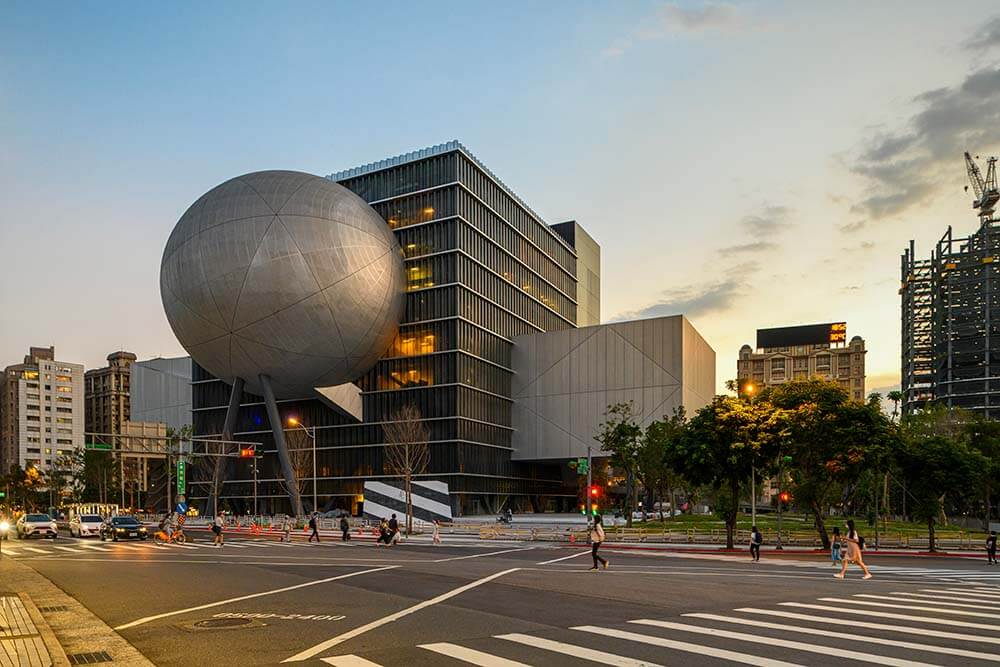 TPAC_credit Shephotoerd Photography
TPAC_credit Shephotoerd Photography
The collaboration of Dutch architecture firm OMA and Taiwan architecture firm KRIS YAO | ARTECH traces back to 2009, when they collectively won Taipei City's design competition for the “Taipei Performing Arts Center (TPAC).” This marked the inception of a profound partnership, strategically bringing together international design and local expertise.
The project took root in the historic grounds of the demolished Shilin Night Market, which is about 2 hectares in size. The chosen site, enriched with its heritage, served as the design backdrop for the architects to explore the history of Taipei's cherished night market. The once busy market served the collective memory of Taipei's residents and played an important role in shaping the city's culture. The plan for the 12-story building was not just to change the physical space, but also to show respect and honor the importance of the Shilin Night Market for the people in Taipei.
Fueled by a shared vision, the teams collaboratively integrate local culture and historical significance of the night market into the architectural design of the Taipei Performing Arts Center.
The essence of the TPAC design is rooted in the concept of "Play Different Together," aiming to capture the spirit of innovation and inclusivity, setting it apart from traditional auditoriums.
Completed in 2022, TPAC consists of three types of theaters, interconnected in such a way that a central cube serves as both a stage box and a communal-services core. This central hub offers essential services and facilities for the community, to enhance the overall public experience.
The concert halls, with their windowless facades, contrast with the central cube covered in glass, allowing a peek into the inner workings of performances. The aim of this see-through design is to create an open and inviting arts center. Moreover, features like the "public loop" offer glimpses behind the scenes, connecting visitors to the lively performances
Architectural innovation also lies in an 800-seat Globe-style theater, a versatile 1,500-seat Grand Theater, and an experimental 800-seat Blue Box. These spaces, designed to be adaptable, can be transformed or merged for unsuspected scenarios and uses, forming a "super theater." This flexibility allows for a diverse range of performances and encourages new connections between artists, the audience, and the public.
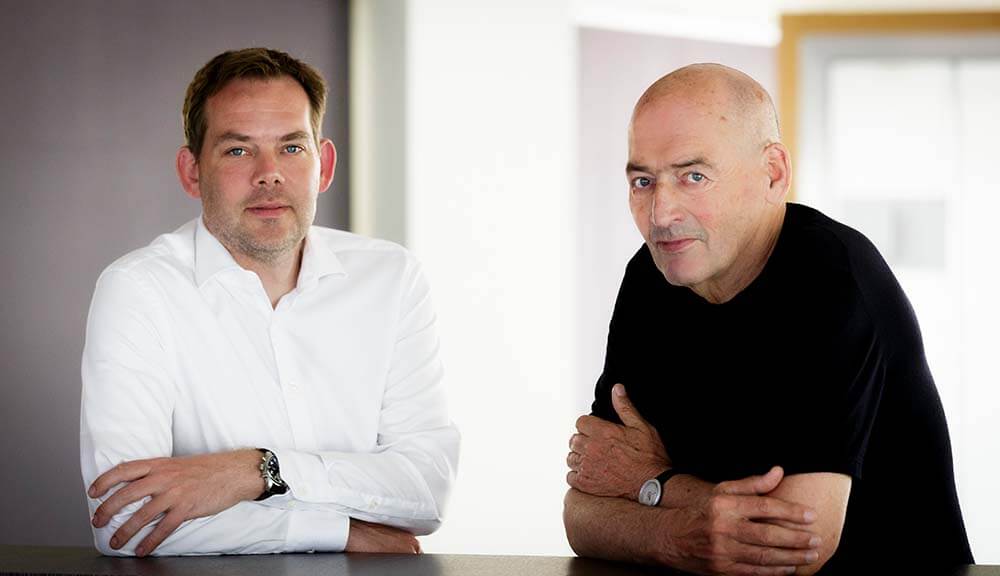 Credit Fred Ernst Rem Koolhaas, David Gianotten
Credit Fred Ernst Rem Koolhaas, David Gianotten
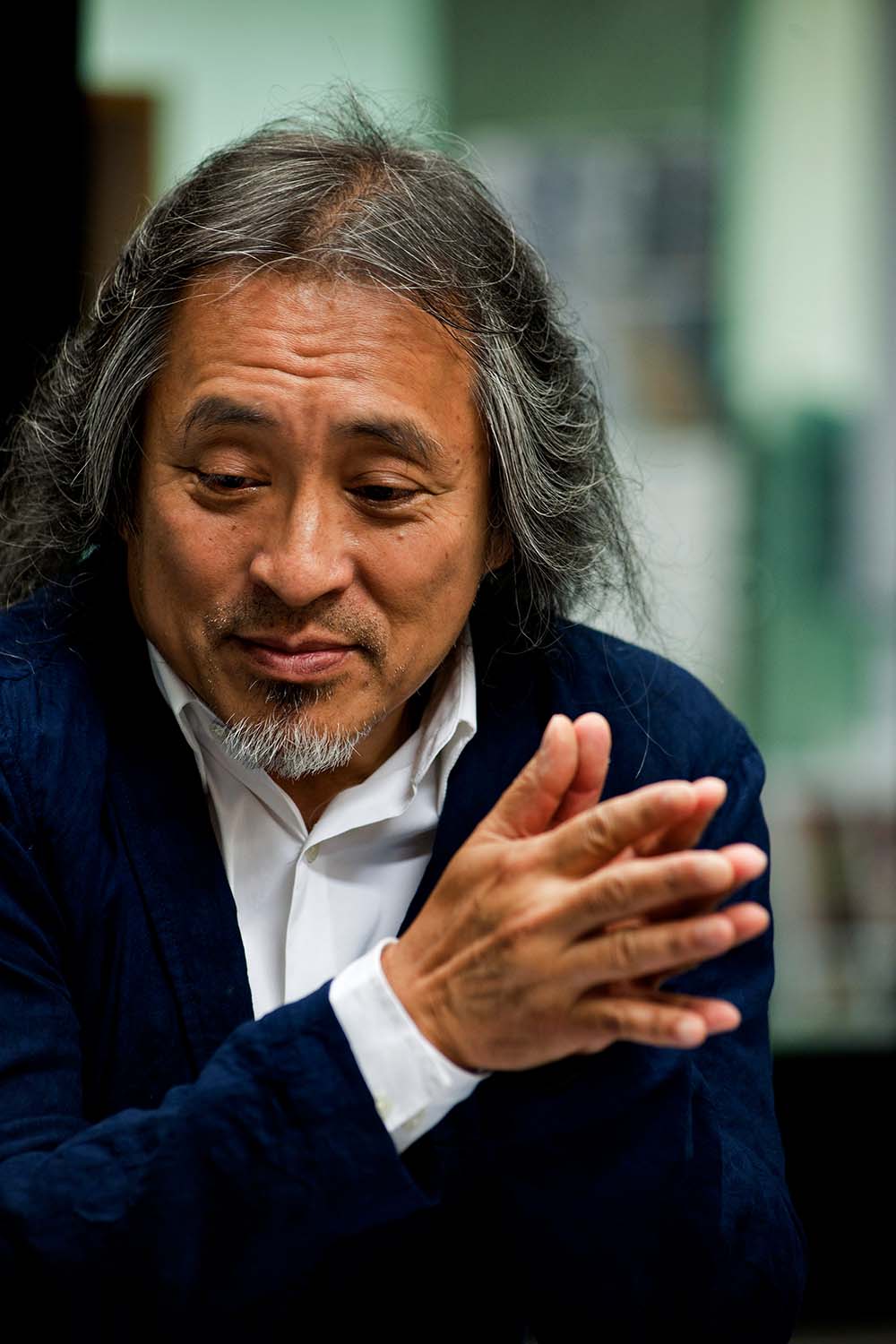 Kris Yao, Hon. FAIA_©Tim Liu
Kris Yao, Hon. FAIA_©Tim Liu
Beginning the transformative journey in 2009, the collaboration stretched over 13 years. Throughout this period, numerous challenges arose in various areas.
One persistent challenge throughout the 13-year partnership is navigating local building regulations, particularly concerning the use of new materials and unconventional systems. An example is the use of a computerized simulation for the fire evacuation strategy, a method uncommon in Taiwan. Obtaining legislative approval proved to be a challeng. To overcome these difficulties, the team diligently offered detailed explanations and drawing sketches, revised documentation, sought support from various authorities, and communicating the groundbreaking design and new technologies to the general contractors effectively.
A significant setback occurred seven years into the project when the initial general contractor declared bankruptcy. Swiftly regrouping, OMA and KRIS YAO | ARTECH worked closely together to bring a new construction company on board and reassess the budget, design, and plan
Moreover, another challenge is the COVID-19 pandemic caused travel restriction where OMA Rotterdam team was unable to attend any physical meetings. OMA's Taipei team and KRIS YAO | ARTECH employed cameras on hardhats for virtual walkthroughs, bridging the physical gap and ensuring ongoing collaboration with OMA’s Rotterdam team.
What makes this collaboration exceptional is the extraordinary commitment shown by both OMA and KRIS YAO | ARTECH throughout the 13-year partnership. Both teams have remained faithful in their collaboration, even while navigating through the tenures of 16 commissioners from different authorities and three mayors.
Notably, the original design concept remained unchanged. Even amid public criticisms about the aesthetics of the design, the team displayed remarkable unity and commitment, ultimately completing this iconic building.
After its successful inauguration in 2022, the Taipei Performing Arts Center thrived in 2023, hosting a myriad of captivating events that attracted both local and international audiences. Highlights included the Creative Expo Taiwan (CET 2023), featuring Taiwan's finest in design, technology, crafts, and performing arts. The year also witnessed stellar performances by renowned international artists, such as the Vienna Philharmonic Orchestra and Bolshoi Ballet, along with the inauguration of the Sun Hall./p>
The Taipei Performing Arts Center has evolved into a celebrated cultural hub, experiencing increased attendance and vibrant exchange programs. This success underscores the crucial fusion of Taiwanese profiency with global exposure in advancing cultural endeavors, and creating something exceptional. As we celebrate the achievements of the Taipei Performing Arts Center, let it serve as inspiration for more partnerships driven by such commitment.

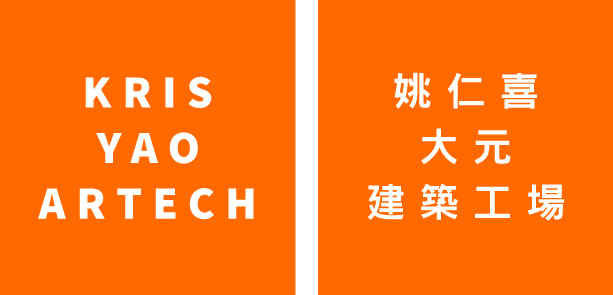
about this project
get in touch with us
E-ink & Bag tag
Altum RF, ITRI & TMYTEK
Boskalis & National Taiwan Ocean
University's Coral Farming Lab
Buurtzorg & Taiwan Home Nursing Partnership
Fairphone & Global Green Material
Heineken &
Spring Pool Glass
MEAN WELL
& Amstelveen
Mecanoo & Archasia
MVRDV, LLJ Architects and The Urbanist Collaborative
OMA & KRIS YAO
System Access & Somni Solutions
TU/e, Academia Sinica & Chelpis
University of Twente & Tamkang University
Taiwanese and Dutch organizations recognized each other’s potential early on. They are now leading the way, creating refreshing perspectives through teamwork, and bringing expertise together. In 2024, it will be 400 years since the first interaction between Taiwan and the Netherlands ensued. Let us mark this anniversary, and highlight our shared history through our successful partnerships.
We welcome you to enter our virtual parade of Dutch-Taiwanese partnerships, where interesting cooperations in innovation, culture, and business intertwine.
The mission of the Netherlands Office Taipei (NLOT) is to promote and support cooperation between Taiwanese and Dutch institutions and companies as well as to provide a platform for strategic economic cooperation. This year, we commemorate 400 years of innovation and cultural interactions between Taiwan and the Netherlands. For more information, you are welcome to visit the Netherlands Office Taipei